Installation responds to statue
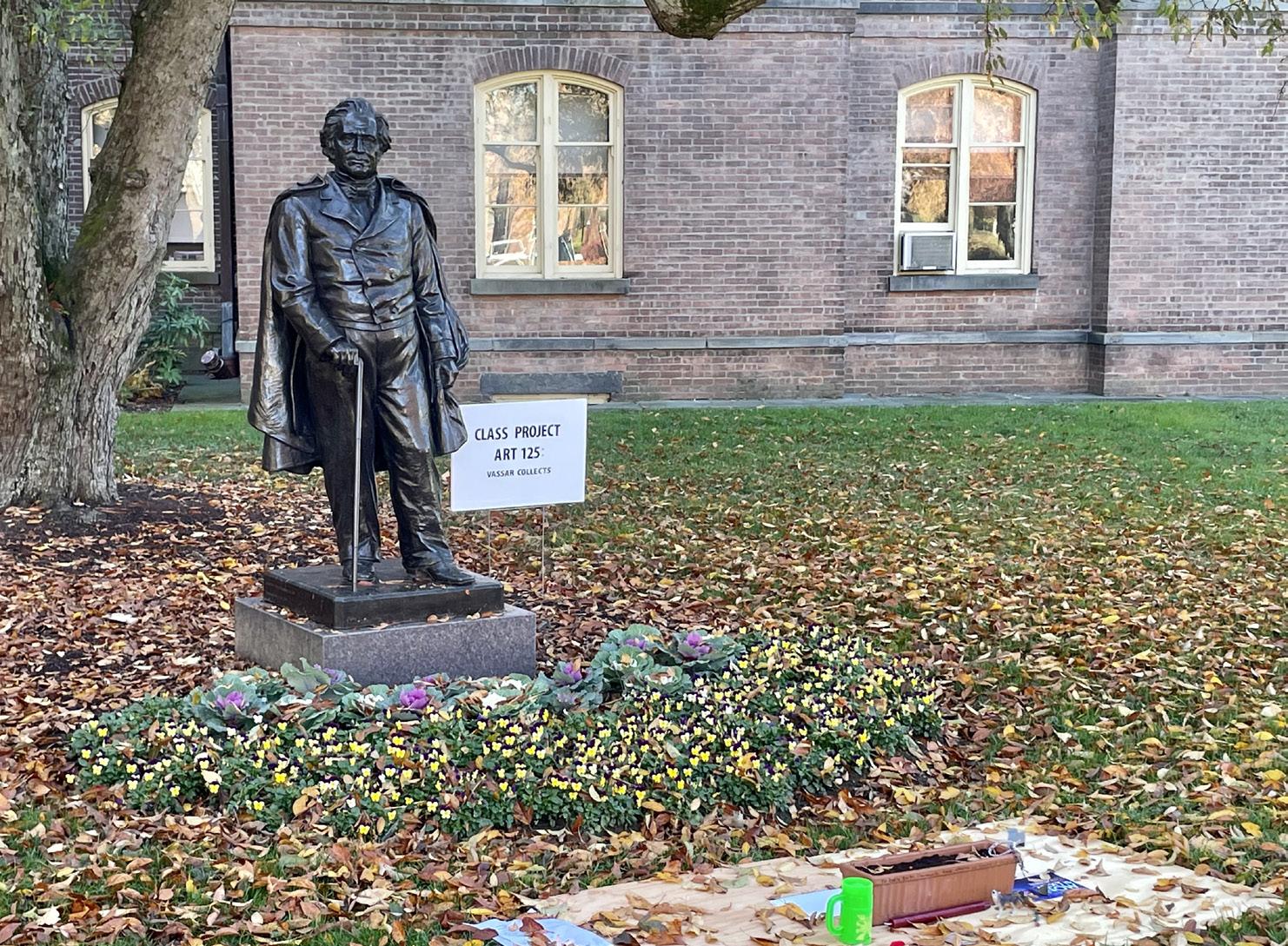 Ganesh Pillai Arts Editor
Ganesh Pillai Arts Editor
As you drive through Vassar’s elaborate ly detailed main gate, towards Main Building, there are a few things that become obviously apparent: the beauty of the build ing’s front façade; the library’s magisterial presence casting shadows over the lawn; the abundance of green spaces that spread everywhere on campus. Moving closer
reveals more and more subtle details. Un derneath the bell atop Main, to the right of the ornate flower beds, stands a statue of Vassar’s founder and namesake, Matthew Vassar. However, if you happened to glance over at the statue this past week, his likeness was adorned with a range of various objects, each with its own unique significances and connections to this campus, details large and small.
See Statue Art on page 5
VSA addresses budget deficit
Nina Ajemian, Jacques Abou-Rizk, Sufana Noorwez Managing Editor, News Editor, Opinions EditorDuring a VSA Senate meeting on Sun day, Oct. 30, 2022, President of the Vassar Student Association (VSA) Julián Aguilar ’23 discussed a $22,000 deficit that the VSA is currently facing. This deficit is the result of a discrepancy between Vassar’s projected student enrollment, which helps determine the VSA budget each year, and the College’s actual enrollment numbers. The Miscellany News spoke further with Aguilar and VSA Chair of Finance Naveen Malik ’25 in person and via email respec tively to better understand how the situa tion arose.
The main cause of the deficit was inac curate enrollment numbers, according to Aguilar. He explained, “In our annual bud get, we had assumed attendance of 2,417 students. But the actual enrollment figure for this year is 2,360. And we had calculated $400 per student for the activity fee, but we actually received $360.”
According to Aguilar, the VSA is given an assumed enrollment to help form the budget for the year. But to provide a more concrete idea of how much money the VSA will have for each following fiscal year, the VSA just recently passed the Annual Bud
geting Reform Act, according to Malik. Aguilar added, “I had hoped that because we calculate an estimate of the number of students that are JYA, and an estimated number of students that are on leave, we would not be in a deficit, but we are.”
Malik explained that a portion of the Stu dent Activity Fee, paid annually by Vassar students, funds the VSA. “The problem with collecting the Student Activity Fee per semester is that during annual budget ing the semester before the Student Activ ity Fee is collected, the Annual Budgeting committee only has a rough estimate of the amount that they should budget for the next academic year,” Malik detailed.
Rough estimates for enrollment and ac tivity fees become problematic when the numbers are as far off as they were this year, as Vassar took in less money from this fee due to lower enrollment numbers than expected. Aguilar said: “I'm sure it has something to do with the fact that class of 2023 was one of the largest classes, and now I believe, then, Class of 2024, and 2025, were much lower. So it's skewed things quite far. And also, it's just difficult com bining pre-COVID admission class figures with post ones.”
Estimations for the VSA annual budget also raised issues in 2017, when similar problems emerged. Aguilar said, “But since then, [we] have been, one, very conserva
Vassar spotlights accessibility
Jyotsna Naidu ReporterThe 2022-2024 Accessibility Plan imple mented through the Fearlessly Conse quential campaign is the first in a series of plans to broadly audit and improve upon on campus accessibility and guide future con struction over the next two years.
“One of the things the [Accessibility] Committee is beginning to think about is ‘how do we shift culture?’,” Dean of Stra tegic Planning and Academic Resources Marianne H. Begemann said. This culture shift was informed in part by student input collected through surveys and open sessions according to Begemann. “How do we have conversations spreading the word and giv ing people the tools that they need?”
The Accessibility Committee, which authored the new plan, took into account student input through open sessions, mem bership on the Committee and a survey sent out to the student body. One in five students are registered with the Office for Accessibility and Educational Opportuni ty (AEO), per the Accessibility Plan. The plan is scheduled to be implemented over the next two years. Already, documents on Moodle are more accessible through tools like Blackboard Ally and the Moodle Acces sibility Toolkit in conjunction with Vassar’s
learning management system.
“First, [the tools] give instructors the ability to scan their Moodle course sites for accessibility problems and assists them in resolving the issues. Secondly, they can let students automatically generate alterna tive formats for uploaded materials (such as converting a PDF into an audio file),” as stated in the Action Steps.
Next semester, a daytime campus shuttle will run in addition to the nighttime safety shuttle. The shuttle will follow a consistent schedule and route from 7 a.m. to 10:30 a.m. to help students get to Gordon Commons, for example. To help students receive such accommodations and foster community, Shira Freilich ’25, Thayer Lehman-Borer ’25, Sneha Das ’25 and Amber Eddy ’25 founded the Disability Self-Advocacy and Support Network.
“Our organization is all about self advo cacy [and] teaching people how to really push for what they need,” Freilich said. “It’s frustrating because the resources are there, they're just not being given to the students that need them because people don't know about it.”
According to Freilich, registration with the AEO is anonymous so students may not be able to find others with disabilities. Thus, a long-term goal of the group is to cre ate a disability affinity center for meetings
Raymond brings annual haunt
Richard Lu Guest Reporter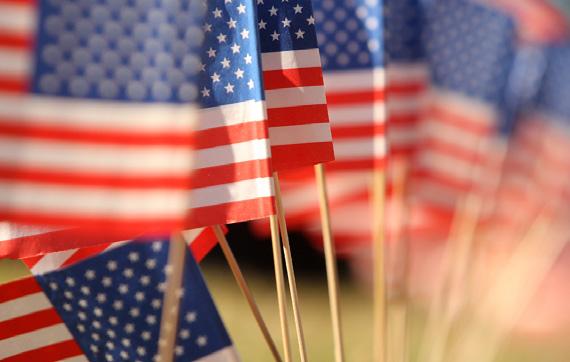
October Break coming to a swift close, students packed their bags and returned to Vassar to begrudgingly continue the school year. However, it was not a solemn homecoming for most: The week of Oct. 26 to 30 marked the arrival of
With
Halloweekend. Students scurried around campus in their whimsical costumes and attended many Halloween-themed events. In keeping with tradition, the event that kicked off this spectacular weekend was the Raymond Haunted House.
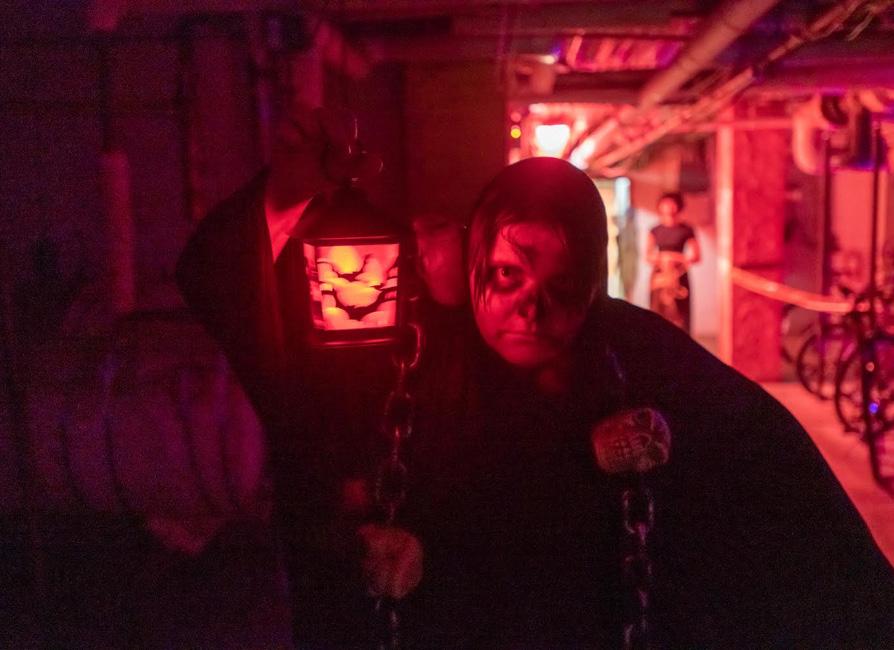
The Raymond Haunted House was open to all students and faculty on Oct. 26 and 27 from 7 p.m. to 9 p.m. The Raymond
See Raymond on page 7
Veterans of the Vassar community come together to share their stories and reflections in honor of Veterans Day.
THE MISCELLANY NEWS
EDITOR-IN-CHIEF
MANAGING EDITOR
SENIOR EDITOR
CONTRIBUTING EDITORS
NEWS EDITORS
ARTS EDITOR
FEATURES EDITOR
OPINIONS EDITOR
HUMOR EDITOR
ASSISTANT HUMOR EDITOR
SPORTS EDITOR
SOCIAL MEDIA EDITOR
DESIGN EDITOR COPY EDITORS
GRAPHIC EDITOR GRAPHIC ARTISTS
VIDEO PRODUCTION MANAGER WEBMASTERS

BUSINESS MANAGER DESIGN STAFF
REPORTERS, COLUMNISTS
Leila Raines
Nina Ajemian
Monika Sweeney Janet Song
Annabelle Wang
Jacques Abou-Rizk Will Sorge
Ganesh Pillai Kai Speirs
Sufana Noorwez
Madi Donat
Nicholas Tillinghast
Doug Cobb
Tracy Cen
Maryam Bacchus
Jacqueline Gill
Sashinka Poor
Karen Mogami Seowon Back
Tori Kim Ian Herz
Rohan Dutta
Chloe Gjoka
Phoebe DiLeo Ruby Funfrock
Carly D’Antonio Arlene Chen
Katie Gebbia Allen Hale Jesse Koblin
Anna Kozloski Gwen Ma
Jyotsna Naidu Sam Patz
Danielle Recco
Naima Saini
Anna Terry Nick Villamil
COPY STAFF
Anica Acuna Caris Lee
Emma San Flilippo Meera Shroff
CORRECTION
MISCELLANY NEWS | VASSAR COLLEGE Graphic courtesy of Sandro Luis Lorenzo ’24.VSA explores solutions to budget deficit problem
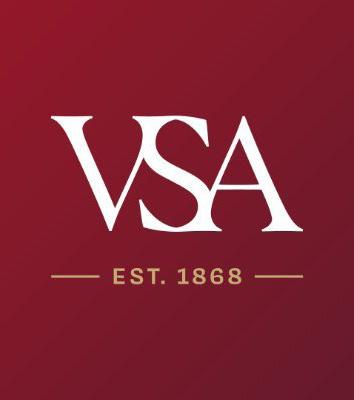
tive with how much money we disperse, and two, with our estimates. They tend to be on par, which is why we have this big surplus now. So we're not in debt, but we are in a budget deficit,” he added.
The VSA has been able to remedy the sit uation with its surplus fund. Aguilar noted that the VSA is trying to utilize this resource as much as possible: “In terms of filling the gap, we're not limited in that way. There's very minimal limitations on even just the surplus in general. The surplus is part of the executive discretionary fund, which the Exec Board has the sole authority and dis cretion to decide how do we use that, or [do we put] that in our operating fund.”
Initially, before deciding to use the sur plus fund to handle much of the deficit, the VSA considered taking funds from stu dent organizations that had annual budgets through VSA Finance but had not submit ted leadership, as required for such budgets by the VSA. This strategy was discussed in the VSA Senate meeting on Oct. 30, as Agu ilar emphasized the delicacy of the situation and emphasized the VSA’s commitment to preserving student organizations’ budgets without any future cuts.

Since the idea was brought up, many or ganizations without leadership completed the requirements to maintain their annu al budget, such as completing treasurer training. The VSA was then able to take the budgets from remaining non-existent orgs,
an action that had minimal impact on stu dents, and use it to reduce the deficit.
The action also had minimal financial impact. Malik wrote, “[U]pon reviewing the number of inactive orgs, the amount of money recuperated from cutting org budgets will be minimal. Hence, our goal is to refrain from cutting org budgets unless absolutely necessary, and instead, use the budget surplus to account for the current budget deficit.”
While helpful for a situation such as this one, there are negative consequences to using the surplus fund as well. Malik explained, “[T]he budget surplus has been allocated to funding initiatives that will benefit the Vassar student body. Therefore, certain initiatives will receive slightly re duced funding to cover this deficit.”
Aguilar elaborated on how these initia tives will be negatively impacted, noting: “It is frustrating that a huge chunk of the surplus is just going to have to go to cover this deficit instead of going to services that we really wanted to do. We really wanted to put a lot of money into a bike share pro gram and a textbook accessibility program and storage spaces. And so those unfortu nately have to take a hit because of that.”
Malik remained hopeful, writing: “De spite these reductions, we are still working to ensure that all initiatives will be ade quately funded using the budget surplus such that these initiatives can be imple mented effectively.”
Accessibility Plan aims to tackle campus inequities
and recreation similar to the ALANA and LGBTQ Centers. The group has gathered 46 members with demonstrated interest as of Nov. 6, 2022, to apply to become a prelim inary organization through the Vassar Stu dent Association (VSA).
“As we get more into this work, we can be gin to see how a lot of what we do is tied to questions of accessibility,” Begemann said. “The work so far has really opened my eyes to areas of accessibility that I maybe wasn’t paying so much attention to before. When we think about the undocumented, espe cially, or the invisible disabilities, [it is im portant to be] mindful about how we think about space and anything from how we cre ate a calendar of activities for the week.”
The Campus Accessibility Audit will review physical accommodations such as ramps and elevators to determine sites for improvement and budget costs with an outside consultant to be released later this year. Previously, major renovations were not required to follow 2010 ADA regula tions. Now, two sets of Accessible Building Guidelines—inspired by the Green Building Standards for sustainability—will be issued for renovations of existing buildings and construction of new buildings.
“We can ensure that our new construc tion and major retrofits go beyond ADA
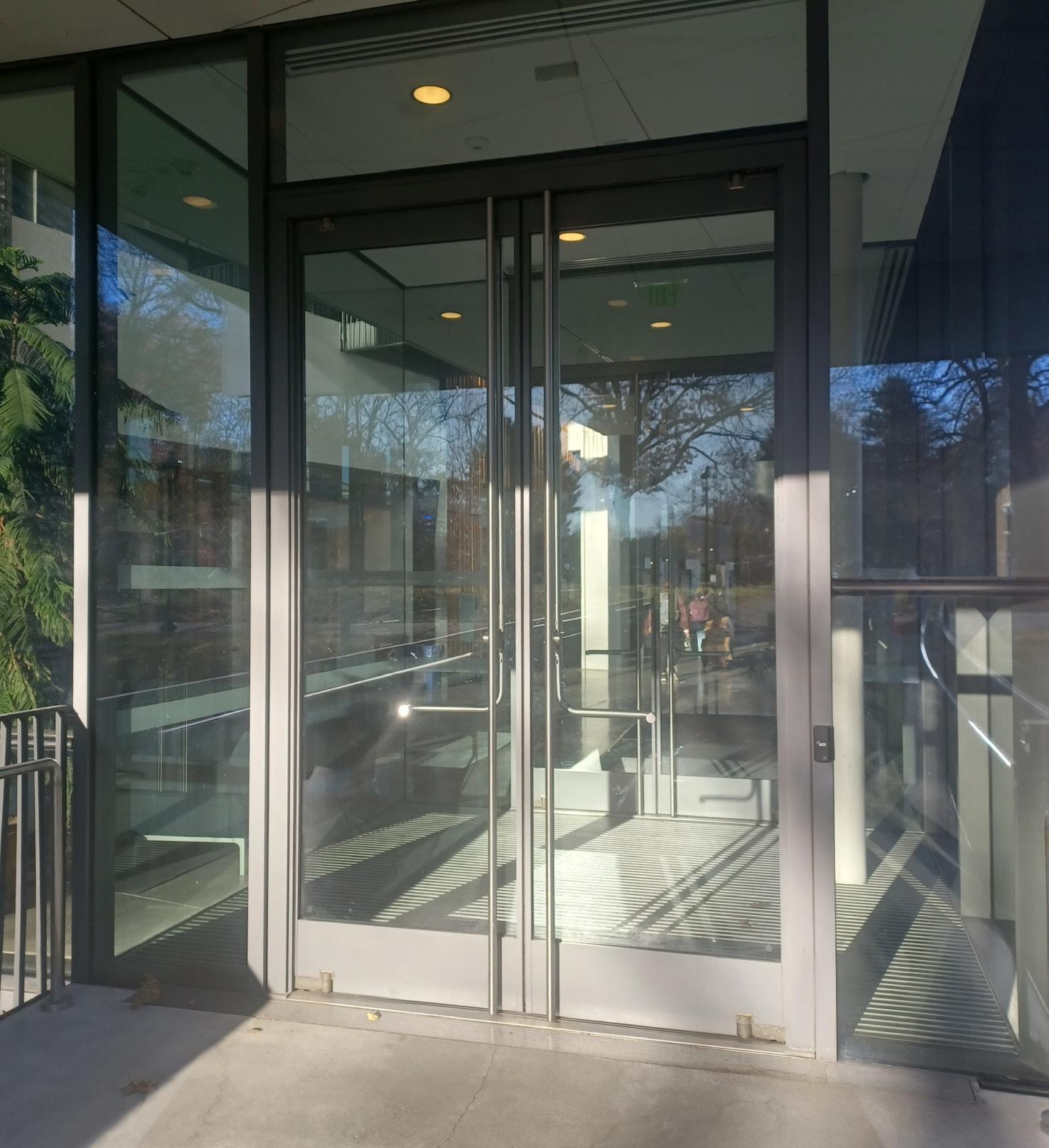
requirements toward creating a universally accessible campus for all,” per the Action Steps.
Universal designs, such as plans for au tomated paddle door openers on the Bridge for Laboratory Sciences doors, not only help students who require accommodations but all students, as survey data pointed to. In the near future, an all-gender locker room in Walker Field House will be opened along side existing gendered locker rooms.
The plan states: “[F]or many transgender, metagender, and other non-cisgender indi viduals, a lack of gender-affirming facilities can make many spaces and activities inac cessible. Ensuring these spaces exist on a permanent basis affirms the College’s com mitment to inclusion for all gender identi ties.”
Gender identity and transgender inclu sion is one of several potential topics for virtual Voluntary Accessibility Training provided for students, faculty, staff and ad ministrators asynchronously.
“There’s a lot of work to be done but I think the only way to do it is to begin talking about it,” Begemann said. “There are defi nitely needs on campus and you can’t do everything all at once, but you can start to chip away at it.”
The 2025-2027 Accessibility Plan will be drafted in Fall 2023 to allow for the current plan’s progress to inform the next.
Vassar's legacy, meaning-making explored in art installation
The placement of these objects comprises the first assignment of Bart Thurber’s Art 125 class “Vassar Collects.” Taught in collabo ration with artist Mark Dion, the pair sought to create a reflective project with which each student could find their own unique connec tion. Thurber spoke to me over the phone about his own thoughts about the project, “It’s an installation that reflects on Matthew Vassar, and the legacy of the college.” The goal was simple: Find artifacts that shed light on the question of legacies and their impacts for future generations, either in terms of Matthew Vassar specifically or more gener ally the values of foundational figures such as him. The requirements for the object were likewise minimal, simply found artifacts that would serve to broaden or enhance our overall conception of Vassar’s legacy. Thurb er further described, “We wanted students to feel like they could reflect critically on the individual, on the traditions, and I think a number of the students did so.” And so, on Nov. 1, the students of Thurber and Dion’s class each brought their unique artifact out onto the lawn in front of Main and arranged them together in a display at the foot of our founder’s statue.
The installation featured a range of var ious artifacts, reflecting Thurber and Di on’s encouragement to find objects that expressed each student’s genuine interpre tation of Vassar and his legacy. One student chose to feature a plastic wolf, commem orating the Stockbridge-Munsee Native American Tribe, an acknowledgement of their presence on this land before the estab lishment of Vassar. Another student, upon learning that Vassar was an immigrant like herself, included a passport photo. One stu dent planted daffodils, as they would bloom during March, the birth month of Matthew
Vassar’s niece, Lydia Booth. Booth was a primary force behind motivating Vassar to found an educational institution for women.
One student chose to bring a mirror, in order to symbolize the need for self-reflection and consideration of the very kinds of issues that this installation was seeking to highlight.
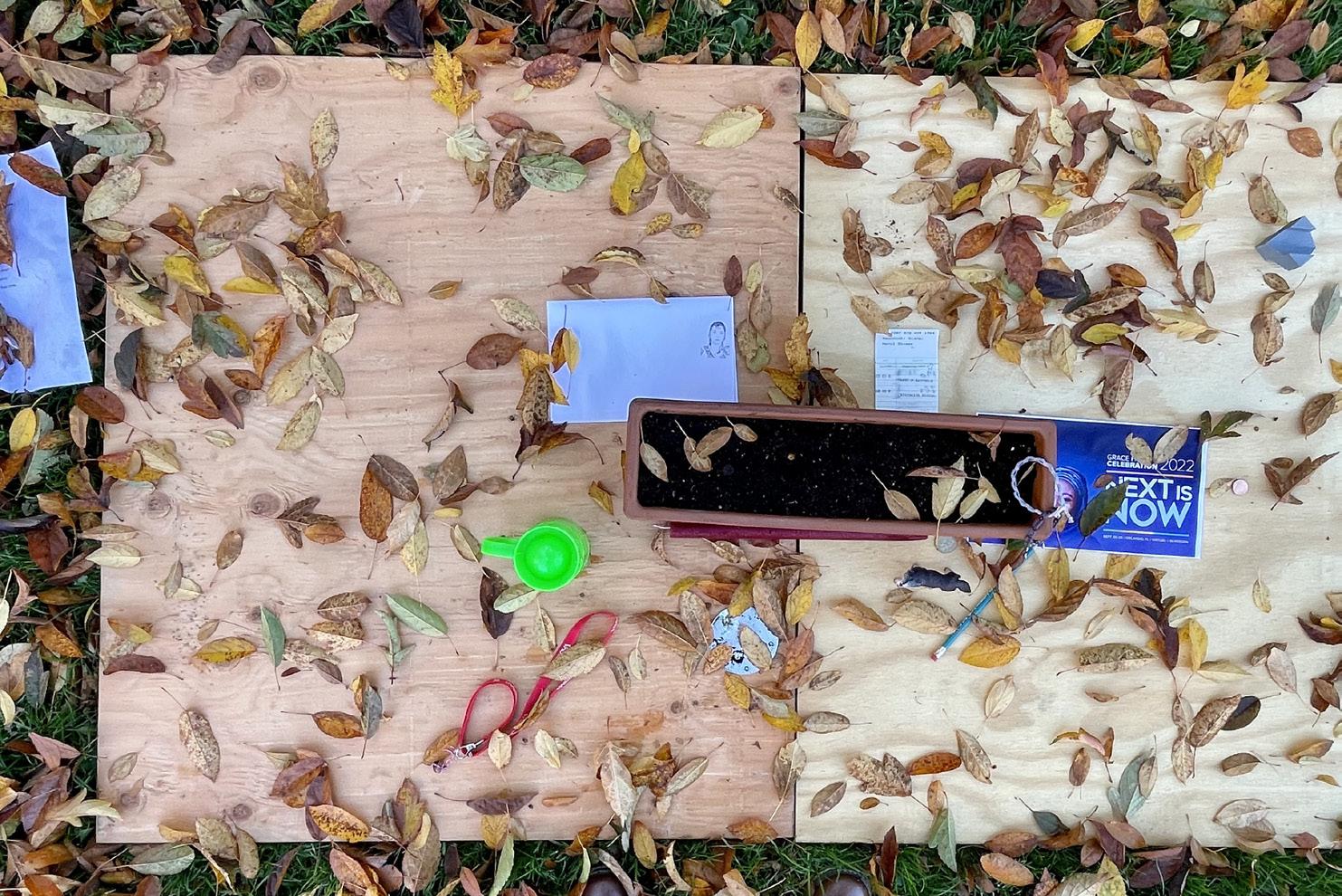
Regarding the installation and its wide range of student-provided artifacts, Thurber not ed “[The installation] is really at the heart of helping all of us to look anew at the ordinary, how it can take on new meaning, things that are sometimes thought of as common ma terial things, how they can be repurposed, re-considered, reflected on.”
One of Thurber’s advisees Jordana Judd ’23 played a key role in the creation, prepa ration and execution of this assignment. Individually, she contributed a bucket of pencils to the exhibition with the inscrip tion “Frances Lehman Loeb Arts Center.” Judd expressed how this installation impact ed her conception of Vassar and his legacy.
“The installation helped me reflect on [his legacy], this feeling that me and Matthew Vassar have similar values in that we both really cared about art, and how the Vassar College Art Gallery both played a really big role in our lives.” Vassar was a figure who had previously been a figure of nebulous background, whom the student body knew relatively little about. E.g. what led him to found the school, what did his life look like prior to doing so? However, as a direct result of this project, those participating gained the opportunity to find connections to a figure simultaneously so entrenched and detached from their daily lives.
Thurber described his inspiration for the project as having come from many notable installations across the country. He was fas cinated by structures like Earnest Heming way’s gravesite, the living commemoration
of Nez Percé tribe’s Chief Joseph and the wishing shrine in Tucson, AZ. “I was struck by these temporary, makeshift installations, and what people choose to leave, and the meanings they have for the individual,” he explained.
As for how Thurber’s class carried out and assembled the Vassar installation, Judd de scribed that each student had the chance to present their object and place it themselves in front of the statue: “Everyone put their ob ject down, in conversation with one anoth er. Everyone was building off of each other.” Despite having only found out about their classmates’ objects minutes prior to present ing, each student was still able to form con nections between their artifacts and others’, finding significance within this web of rela tions.
And so, when all was said and done and placed, what stood was a testament to the diversity of our experiences, the lasting im
pact that legacies can have. Students grew to understand the ways in which we form meanings with things, and how we may go about repurposing those materials for differ ent kinds of meanings. What remained clear to all involved was our shared ability to find ways to connect to something, our ability to attach ourselves to causes and ideas that we believe strongly in, concepts that span gen erations and speak to people past, present and future. “So often we think of our intel lectual journey at a college as a very personal one,” Thurber emphasized. “The fact that we have so many perspectives and that we are all learning from one another, it’s a confir mation for me that the whole is greater than the sum of its parts, we learn so much from one another.” And while the installation has since concluded, art students and curious minds alike can continue to engage with the lasting values of self-reflection and together ness that this installation fostered.
Reviewing the new Taylor Swift album: 'Midnights'
Cole Guest ColumnistAs the clock struck midnight on Oct. 21, I—along with millions of other fans—eagerly pressed play to stream Taylor Swift’s highly anticipated 10th studio album “Midnights.” The album tells the story of 13 sleepless nights throughout Swift’s career. As a chaotic surprise in typical Swift fashion, three hours after the album’s initial release, the pop princess released an additional seven bonus tracks on “Midnights (3 a.m. Edition).” Needless to say, it was a wild night for me and fellow “Swifties” worldwide. “Midnights” is now Swift’s 11th number one album on the Billboard 200 chart, entering the chart with a jaw-dropping 1.578 million album units, as reported by Billboard. On top of this, Swift currently occupies all top 10 slots on the Bill board Hot 100 chart—the first artist ever to do so. All of this suggests that Swift is back and better than ever, entering what could be her most successful era yet. But, does the album have the star quality and commercial success that we’ve come to expect from Swift?
In Aug. 2022, while receiving the Video of the Year Award for “All Too Well (10 Minute Version) (Taylor's Version) (from The Vault),” Swift announced that she would release “Mid nights” on Oct. 21; I was ecstatic. I followed Swift’s virtual TikTok segment “Midnights Mayhem with Me,” which she created to an nounce song titles. With all of Swift’s careful ly crafted publicity, I had high expectations for the album. Personally, I am a huge “folklore” and “evermore” fan—two of Swift's albums that I consider to flaunt some of her best lyri cism. Upon hearing the opening track “Laven
der Haze,” I realized that Swift was doing a 180 from the softer, folk-inspired sounds of those two albums. At first I was disappointed, but as I listened to the funky synth and deliberately dramatic auto-tuned backing vocals, I under stood the importance of this sonic switch. Swift’s new sound on “Midnights” is bombas tic, confident and powerful: a far cry from the more restrained style fans had become so ac customed to on her recent work. This switch makes perfect sense in the context of Swift’s career. Infamously, Scooter Braun acquired the master rights to Swift’s albums from her debut through “reputation” when he bought Big Machine Label Group. That acquisition prompted Swift to embark upon the ambi tious task of re-recording her entire early cat alog of work. Other factors in Swift's life and career, such as her longstanding feud with the ever-controversial rapper Kanye West, have also influenced Swift’s newfound assertive ness, which shows through on tracks such as “Karma,” “Bejeweled” and “Vigilante Shit.” These energetic tracks serve as a reminder of the magnitude of control Swift now has over the music industry. As a listener, it is enjoy able to hear her relish in the conquests of her career.
Other songs, in contrast, are less compel ling because of their familiar sound. While listening to the album, many elements of the songs seemed all too similar to previous Swift tracks. The chorus of “Lavender Haze,” for example, is nearly identical to the climax of the 2019 “Lover” track, “I Think He Knows.” And, the vocal sample, echoing the words “I remember” on “Question…?” sounds exactly like the vocal sample on “Out of The Woods” from “1989” with the same lyric. These simi
larities make “Midnights” seem like a hodgepodge of previous Swift albums, most notably “1989,” “reputation” and “Lover.” Considering that Swift has used the same producer, Jack Antonoff, for all of these albums, some sim ilarities are bound to show up. But the sheer number of comparisons slightly diminishes the overall merit of “Midnights.” The album even resembles Antonoff’s previous work with other artists, such as Lorde’s most criti cally acclaimed album, “Melodrama.”
Despite the somewhat-recycled nature of a few songs on the album, there are still unique moments beyond the catchy and highly tour able tracks that allow Swift’s mastery of her craft to shine through. “Labyrinth,” for exam ple, with its raw, honest lyrics and sporadic synth is a standout on the album: “You know how much I hate that everybody just expects me to bounce back, just like that,” Swift croons in the pre-chorus. She continues to ex periment with synth and steady-backbeats in the post-chorus, exhibiting a dreamy, alterna tive flair previously not present in her work. “Sweet Nothing,” co-written with Swift's ac tor-beau Joe Alwyn under the pseudonym “William Bowery,” is evocative of a child’s lullaby. The track is hypnotic, intimate and downright adorable. The bonus tracks on the “Midnights (3am Edition)” LP, produced with the help of The National’s Aaron Dessner, are especially poignant. “Bigger Than The Whole Sky” is a heart-wrenching glimpse at what I interpret as Swift’s loss of her younger self. Similarly, “Would’ve, Could’ve, Should’ve” is a powerful, emotional stab at the confining and degrading nature of being in a relation ship with an emotionally manipulative old er man (perhaps her notorious ex-boyfriend
John Mayer, who was 13 years her senior).
All in all, there are very few disappoint ments on “Midnights” (with the notable exception of the unfortunately almost un detectable backing vocals from Lana Del Rey on the highly anticipated collaborative track “Snow on The Beach”). Swift artfully balances high-energy pop with carefully-crafted bal lads, managing to break new ground while simultaneously building on the proven ap peal of her previous albums. Although Swift’s return to more mainstream pop might be dis appointing for some, it may well be a neces sary change that will usher in a much-needed breath of fresh air, allowing her joy and resil ience to shine through in the upbeat nature of the tracks. This energy will coincide perfectly with the recently announced 2022-23 Taylor Swift: The Eras Stadium Tour—proving that Swift’s return to pop is both timely and ever so logical. While high energy tour-ability may take precedence over seamlessly crafted lyr icism—as in previous albums “folklore” and “evermore”—Swift has successfully executed what she seems to have intended to do: She made a fun, catchy, confident and empow ering album to showcase during her stadium tour return. She has put aside isolation and heartbreak in favor of dazzling her fans and relishing in her success. After years of hear ing Swift sing about turmoil and heartbreak, it is refreshing to hear Swift own being a “Mastermind,” capturing the attention of her “Sweet Nothing.” While “Midnights” might not go down as Swift’s magnum opus, it re minds the whole world that she is still our “Bejeweled” pop princess, and when she walks into a room, she sure as hell can still make the whole place shimmer.
Weird, wacky, wonderful: Ween play their hearts out live
Allen Hale ColumnistThis Halloween I had the opportunity to see the band Ween live at the Beacon Theatre in Manhattan. Ween is not often a household name when it comes to ʼ90s alternative bands. Telling someone you frequently listen to the band that wrote “Ocean Man”—famous for its appearance in “The SpongeBob SquarePants Movie”— tends to prompt a lot of confused looks. However, its unique blend of genres, exper imental vocals and varied instrumentation all make Ween one of the most fascinating rock groups of any time period. Its music bounces between being intensely emotion al, humorously sexual and flat-out weird, depending on what song you choose. Even after many years of recording and touring, the group has not lost a step; its recent show was highly energetic and enjoyable all around, making for a fantastic experi ence of live music.
My girlfriend Chloe and I have been fans of the group for some time now, and we were ecstatic to see that it was playing near by during her visit to Vassar. We left from the Poughkeepsie train station around 5 p.m., arriving at the Beacon Theatre about 30 minutes before the show started. The interior was regal and ornate, decorated with large statues and a red and gold color scheme. Concertgoers were mostly dressed in Halloween costumes, a contrast with the venue's design, which felt very fitting for a Ween show. After security forced me to throw out my Clif bars and seek out the
vendors instead, we found our seats in the orchestra section.
The band members entered on stage in a triumphant manner, dressed in squirrel costumes with large prosthetic testicles that they heaved into the audience. The group played behind its Boognish logo, often ex plained to be a demon-god from which the band sprouted from. Everyone had been seated until this point, after which everyone stood and danced throughout the show. “I’m Dancing in the Show Tonight” was aptly chosen as the opener, a bouncy, lightheart ed track centered around the live piano ac companiment. Similar to many songs from the show, in the live version the band altered the instrumentation of the original studio recordings, removing extra brass parts in this case while emphasizing a heavier, gui tar-oriented sound. Next up was “Take Me Away,” one of the many selections from Ween’s album “Chocolate and Cheese.”
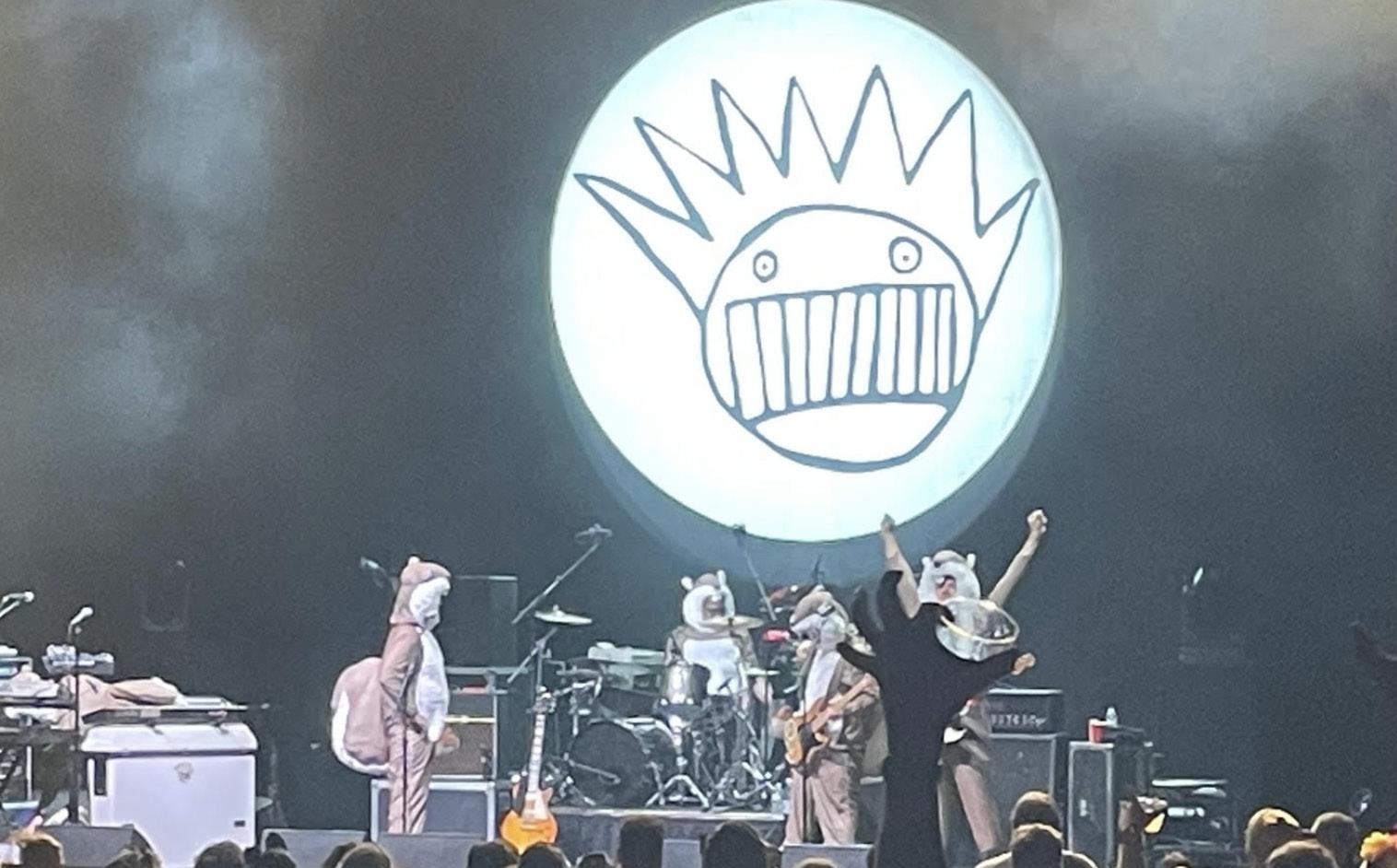
Drummer Claude Coleman Jr. was espe cially prominent in this song, thundering away on fills that made the track feel much heavier than it does on the album. The group’s humor was showcased on a slew of innuendo/expletive-filled songs like “Touch My Tooter,” “Piss Up a Rope” and “Wavin’ My Dick in the Wind.” Ween’s eclectic in fluences were visible in these selections, the second of these three tracks having the stan dard features of a country song paired with comedic, off-beat lyricism.
Other choices showcased the band’s more earnest, heartfelt songs. Romantic songs like “She’s Your Baby” and “Baby Bitch” were
softer in comparison to the overall setlist, al though their volume and intensity were in creased in a live setting. Some of the band’s best known works were also chosen for per formance, taking classics like “Buckingham Green,” “Roses and Free” and “Voodoo Lady” and expanding them in length. Michael Melchiondo Jr., aka Dean Ween, performed extended guitar solos with impressive abili ty, taking advantage of the freedom of live performance to wail on his instrument. I had been familiar with his talent on studio work but was quickly blown away by his live playing, which was far more virtuosic than I had previously realized. Many songs often entered into psychedelic jams, with intense colored lights and smoke machines posi
tioned around the stage, visually aiding the music. The band’s live interpretations tend ed to be stylized in this manner, opting for more straightforward instrumentation and a dense guitar sound. My personal favorite Ween track, “What Deaner Was Talkin’ About,” was also performed in a passion ate manner, bringing me back to my first memories of listening to the band’s music. The group had played around 25 songs from all across its discography by the time we left to catch the train home. I left the show with an even greater appreciation for the group’s creativity and energy; as I continue to lis ten to its music even more in the following weeks, I look greatly forward to the next time I can see Ween tour nearby.
' The Thief and the Cobbler' proves plot isn't essential to success
“The Thief and the Cobbler” is a master piece of animation but a novice’s play at storytelling. It is bursting with character and expression but predictable and narra tively uninteresting, simple as a young kids’ film. Yet the film holds numerous layers of artistry one would rarely dare to express to an exclusively young audience. In fact, its artistry makes it one of the most capti vating films I have ever seen. The passion behind its creation is tangible in every sec ond of buttery-smooth animation, and the non-narrative aspects of the writing—char acters, humor, visual gags—are consistently delightful. It’s a film I unabashedly adore, but on paper, its broader issues sound im mense. So, how do we solve this riddle? If the film is so flawed in clearly discernible ways, how can I so love the whole?
First off, the plot of the film is, again, ex ceedingly simple: There’s a fantastical Ara bian city of gold protected by fate, a thief that steals the golden balls (yes, they only call them “balls,” yes, it’s pretty funny). A cobbler named Tack joins the kingdom’s princess, YumYum, to protect the city from both a comically evil army called the One Eyes and the turncoat evil Grand Vizier ZigZag, whose skin is inexplicably blue. It probably does sound quite juvenile from that description (I still can’t get over how odd YumYum is as a name), but there is far more going on, just not in terms of plot.
“The Thief and the Cobbler” was never finished or even released. It did have two releases under different titles, but neither versions held true to the unique (and some times bizarre) vision of the director and lead animator Richard Williams, and it is pre cisely what they avoid that I find most inter
esting about the original. All fans of the film had available to them was, for a long time, a workprint: an unfinished version of a film put together in a form that would represent the final edit. The workprint is finished in the most important ways: It’s fully voiced, well-edited and has all the completed ani mation the original team had made, even if some shots are just pencil animation. While plenty of the shots are, sadly, only storyboards or animatics—that is, a series of key pictures rather than full animation— these do represent the minority. Finally, the workprint has, in recent years, been heavily touched-up by a dedicated fan named Gar rett Gilchrist (whose “Recobbled” cut of the film is available on YouTube) that softens a lot of the workprint’s overly bright colors (which were either a somewhat-off choice by the color artists or merely a symptom of the original tapes) and has been upscaled to a tolerable resolution, among other im provements.
The film is roughly an hour and 40 min utes, yet the golden balls are stolen—remem ber this is the inciting incident—40 minutes in. However, the moment-to-moment writ ing is generally quite brilliant. Dialogue and character dynamics, like that between Tack and YumYum, are simple and charm ing. A personal favorite gag of mine are the brigands the main characters encounter in the desert, who are drawn comically large, and no two of whom look the same. They’re inexplicably Irish and very convincingly voiced, and their characterization is that fun kind of comical idiocy that is almost whole some in its innocence, ironic given they’re supposed to be a band of robbing bandits. But by far the best form of character writing is that of ZigZag, the Grand Vizier with eyes for the crown, voiced by Vincent Price, who gave an incredibly flavorful performance
elevated by the character’s inexplicable pen chant for speaking in rhyming couplets, lines which were impressively written, since couplets can easily end up sounding awkward.
By far, the aspect of “The Thief and the Cobbler” that stands out the most is its an imation and visual style. The film’s pro duction spanned 29 years before leaving William’s hands in the ‘90s, taking its time both due to snags in funding and the artists’ immense care for creating the most refined and most ambitious animation they could (Wikipedia). The work was un-economized unlike most animated films—which can be quite limited in time and budget—and the final product is stunning, especially to those familiar with how difficult and tedious hand-drawn animation often is. The film’s motion is enchantingly smooth and lively, even when it’s slow. No detail was spared in the pursuit of artistry; numerous characters have constant sources of extra movement, like long billowing clothes, a swarm of flies that follows the titular Thief as if it’s a part of his own being or ZigZag’s wonderfully ab surd coiled shoes that smoothly unwind and wind up again with every step.
The film’s visual style also interestingly interacts with the animated movement. Marc Hendry on YouTube has a great video detailing various aspects of the film’s visuals, such as its continuous use of intricate back ground and optical illusions. A shot might open with an environment largely made up of flat, intricate patterns that characters then walk into or over to reveal the physical form hidden by illusion. As Hendry puts it, “Over the course of the film, this creates a hypnotic effect, and it’s a visual treat every time they present you with an illusion like this and then solve it by revealing the per spective with animation.” This creates shots
that are more visually engaging by default than most traditional backgrounds that try to emulate real space. Finally, the most de lightful characterizing flair in the film is, to me, the way expressions are formed for the protagonist Tack, who is both mute and whose mouth is rarely visible. Instead, he always holds one or couple literal tacks in his mouth that continually shift to create the exact lines of a smile, or a frown, or a side-mouthed concentration with the head of the tack as a dimple. It’s perhaps one of the most charming character design ideas I’ve seen done in animation.
This also brings me to my ultimate answer for why I love this broken film, which is that its goal, unlike most cinema, is not to tell a story, but to string together all these effects of character, visual style and animation into a dazzling whole. That’s why unimportant scenes drag on for minutes, and it’s also why those very scenes feature some of the most ambitious animation: They are the reason for the film’s existence. Other aspects, like the splendidly fun dialogue of characters like ZigZag, are a result of passionate and creative people making the film they want ed to make, a film that had no apparent need for a perfect script. I’ve sometimes imag ined the drawn-out animated sequences as standalone short films, and, aside from the context that the narrative offers, I think I would have no technical issues with those sequences in that setting. So, one could al most say that “The Thief and the Cobbler” is a series of masterfully animated shorts jus tified by a simple narrative with some fun characters and crafty dialogue. Importantly, this art of immediacy isn’t truly shallow; it’s like the film equivalent of a painting, where whatever narrative might be drawn from it is hardly the point, and one must merely watch.
FEATURES
Confronting the horrors of the Raymond Haunted House
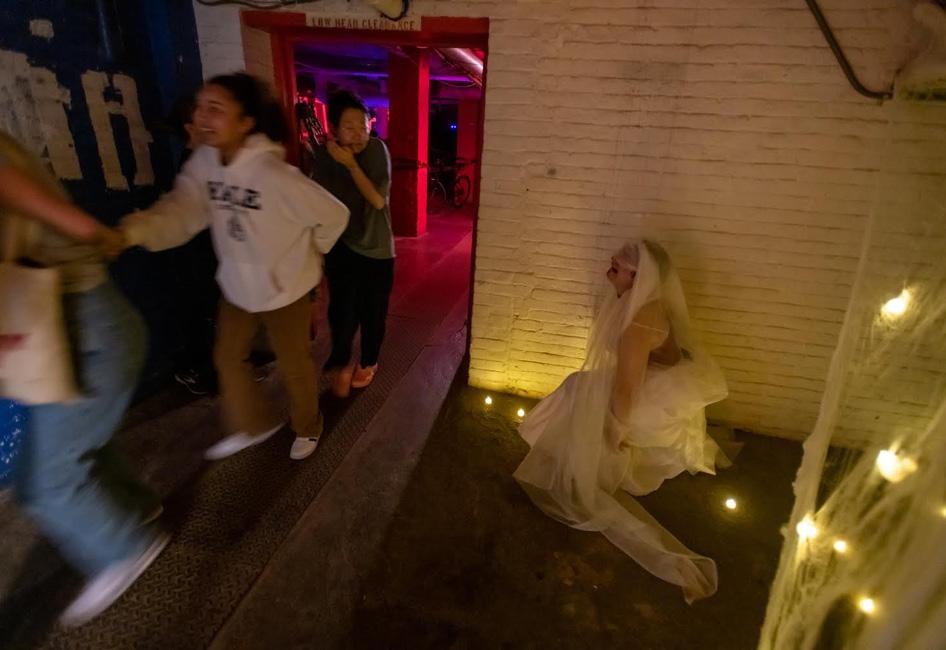
House basement was thoroughly decorat ed with Halloween props, which added to the eerie atmosphere that visitors were met with. Albeit most of the credit goes to the student actors and volunteers who played the ghouls and monsters in the event. Gus Pointer Mace ’26 was an actor in this elabo rate scheme. They said, “I’ve always wanted to be part of [a haunted house]... I loved it [and] everyone was fantastic!”
Raymond House Student Advisor Brynn Conrad ’24 led this fright-filled operation. This is her second year directing the Ray mond Haunted House. Since there was a shortage of scare actors last year, Conrad was determined to get a large group together this year. “Thankfully, I was lucky enough to find a committee of people as dedicated to the spirit of Halloween as I am… [and] got a lot of help from my wonderful committee when it came to getting everything set up for the big night,” she said.
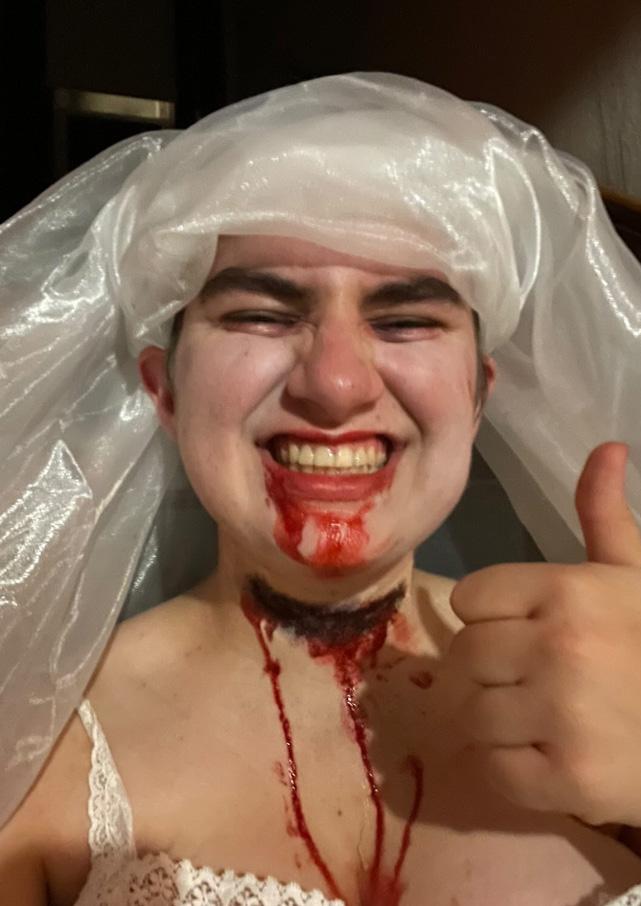
This committee was composed of stu dents that come from a variety of back grounds, all with skills central to making the Haunted House as terrifying as it was. One of the actors, Sarah Kessler ’24, had prior experience scaring people. “I actual ly worked at a professional haunt this past summer, so I figured my skills would be pretty transferable,” she explained. Pointer Mace is skilled at doing makeup and design ing costumes. “All the clothes I was wear ing were handsewn by me in Spring of last year, and I brought them here after October break [to use in the Haunted House],” they recalled. The Haunted House also allowed students to try something they’ve never thought about doing. A student who want ed to remain anonymous said, “I decided to be part of the house because I was always scared of haunted houses… so I wanted to
be on the other side of things.”
After all the hard work from the Ray mond committee, it’s no surprise that the spectacle was a resounding success. The line for this Halloween attraction stretched all the way across the Residential Quad. “It truly warms my heart hearing people talk about how much they enjoyed it and how spooked they were by the scare actors and the set-up,” Conrad shared. “It means that our event did exactly what it was meant to do: give people a little scare in the name of the Halloween season.”
For the actors, there were many special moments inside the Haunted House. Some moments were simple. “[I] really loved [it] when every cue went off right, and peo ple were really scared by my section and the other scarers in it,” Pointer Mace said. Other moments were over the top. “I fig ured out an extra scare where I would run full-speed at the guests from behind while they’re distracted,” Kessler shared. “It al ways got the best scares!” There were also moments of pure unadulterated joy. “My favorite moment was when people were scared of my laugh,” the anonymous stu dent said. “It was really fun, very hot, but fun.” Despite her role as the director of the Raymond Haunted House, Conrad also tagged along on the spooktacular fun and was a scarer like the rest of the committee. Here’s what she had to say: “Oh, and being the one to scare them is reeeeally fun too.”
Overall, the annual Raymond Haunted House showcased the eccentric and lively community within one of Vassar’s quad dorms. Conrad shared: “As a student, I have so much love for this house and all its quirks. The community here is genuinely so vibrant, and it is always fun when we get to come together [to] celebrate the wacki ness of our dorm (All hail the Rat King!!!)”
VOICES
A thank you from Vassar Veterans Association
Britt AndradeThe Vassar Veterans Association would like to take this opportunity to thank The Miscellany News and its dedicated staff to its continued commitment to Veterans’ Voices. This is the fourth issue in which Vassar’s Veteran students are showcased through their stories and insights towards military experiences. I’m especially grate ful to be able to partner with the paper as a Vassar veteran and previous Humor Editor Francisco Andrade ’22, who started this col laboration during his sophomore year and while he has graduated, we have managed to
continue his legacy. I’d like to thank Colleen Mallet, the new director of the Vassar Veter ans Initiative. Colleen has worked tirelessly to support the veterans of this campus, first as the registrar and now as our new director. She has been an amazing supporter of our community and has ensured that her door remains open whenever one of us is in need. The VVA would love to give a shout out to the dedicated mentors on Vassar’s campus with a special mention to Professor Drew Minter who has taken on the mentorship of two classes of Vassar Veterans. I'd like to lend support to Professor Del Razo and Pro fessor Jenny Magnes as exemplary veteran
professors and mentors. Finally, I think that it is important to acknowledge that while the veteran students get plenty of acknowl edgement this week for Veterans Day, veter an service is not obvious. We don’t have our veteran status tattooed on our foreheads and military service has affected more people than we realize. Some choose to talk about service while others don't. There is no right way to be a veteran— you simply are. This year I hope that we can all look to our com munities and provide the support and com radery that our peers and loved ones need. To the Vassar community, thank you for an other great year.
The isle of misfit toys
As a veteran, sometimes I feel like a toy from the Isle of Misfit Toys. My refer ence may be a bit dated, but the metaphor stands. Somehow, even though I fit all of the characteristics of the military and civil ian communities, I don't feel like a member of either group. When I left the military, I spent a lot of time trying to figure out how I wanted to present my veteran identity. I spent seven years in the army—the majority of my adult life—and from my experience, military culture is almost cult-like.
Everything relates to the military when you're still in. You get up super early, go to formation, workout, shower, eat, go to work, maybe go to lunch, keep working, leave by 1700 if you're lucky, repeat. When your day is this structured, you start hang ing out with the people you see the most. That means your peers, your fellow sol diers. Your community shrinks down to the military. But when I left, I lost my com munity and my identity. I had to rebuild.

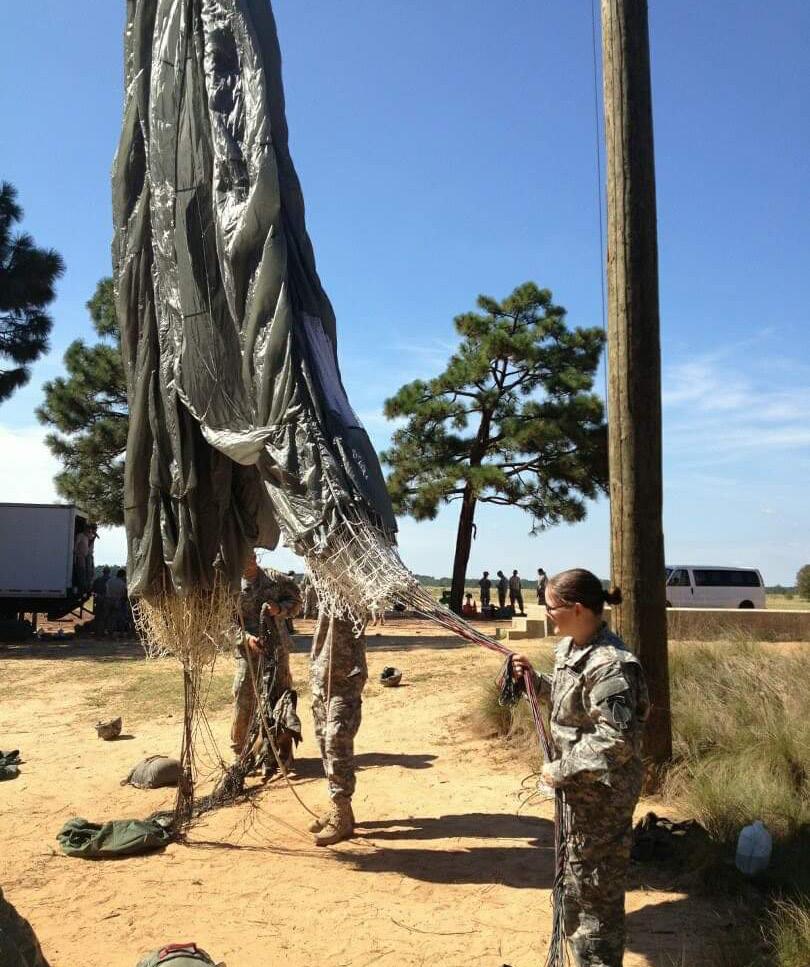
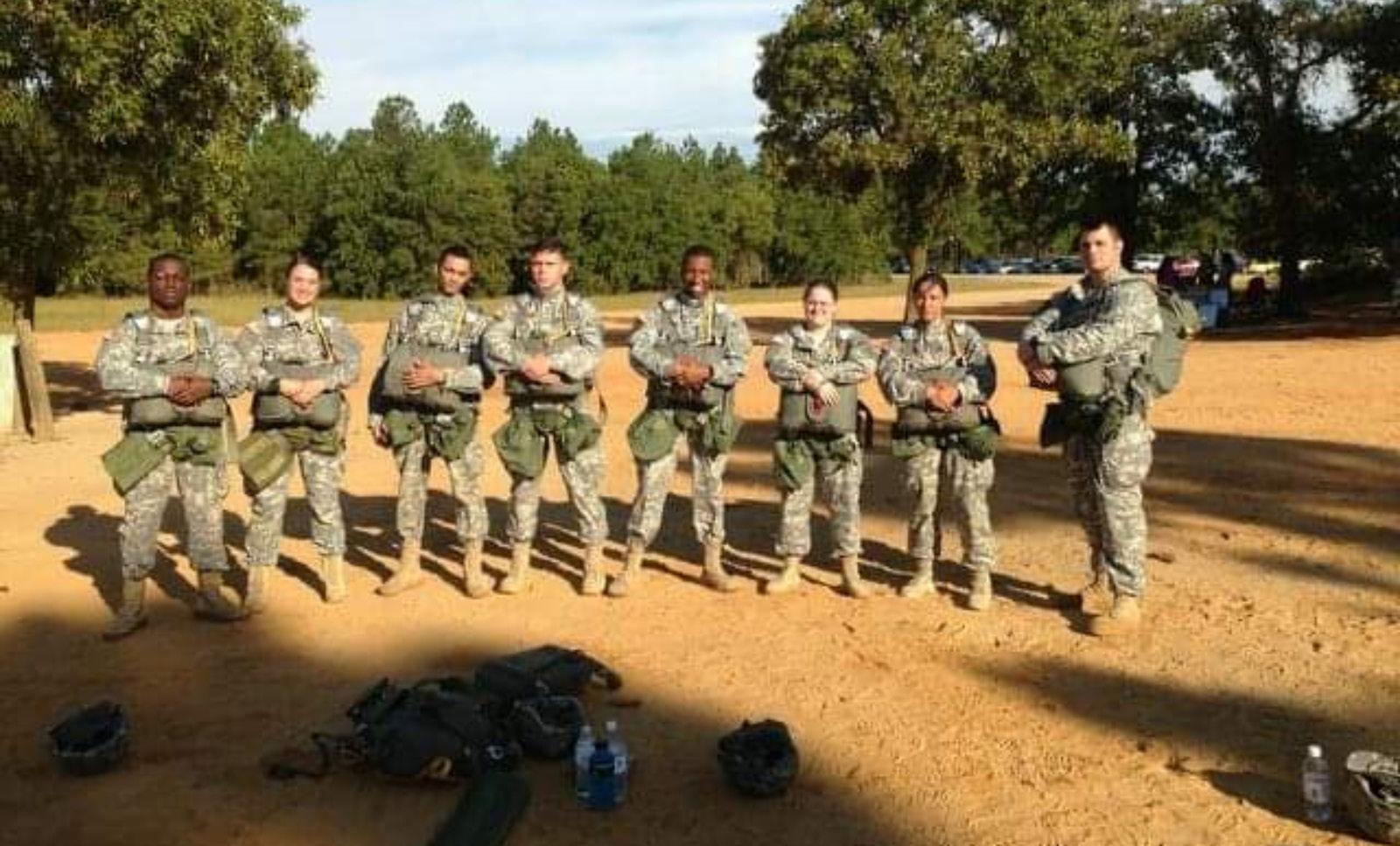
It should be an easy transition. Half the time I wasn't even seen as a soldier unless I was in my uniform. My husband got thanked for his service—mine was ignored. Civilian contractors asked for my sponsor ID number instead of my own at appoint ments, assuming I was a spouse and not a service member. Even my fellow soldiers assumed my military service. It's funny the things you hear when you’re the only wom an in the office. Comments wondering if I’ll get pregnant to avoid deployment or jokes about how lucky I was to have easier phys
ical training standards or the way they al ways avoided me after annual equal oppor tunity or sexual harassment training out
of fear that I might finally stop acting like their jokes were funny and report them. Being a civilian again should have been easy. And then it wasn't. Transitioning back to civilian life felt like jumping off a cliff without knowing if there was water waiting at the bottom. I’ve been out of the Army for a little over three years. In that time I’ve become a student, an activist and a mother. Those new pieces of my identity have been amazing and have allowed me to grow in ways that I didn’t expect. I became more confident in my ability to keep up in the classroom after the second semester. While imposter syndrome creeps in, the reality is, I’m a good student and I love my course load. My classes helped rekindle my dreams of being a lawyer and working in civil rights. All of those life experiences coupled with the birth of my kid should mean I’m living my best life in a lot of dif ferent ways. And it does for the most part. I love the path I took because it led to a pretty great life. However, whenever my class mates reference a trend I’ve never heard of or talk about having kids like it’s a curse, I feel my age a little bit. I’m 30 on a campus where the majority of my peers are the age of my baby brother. I have a family friend that goes to Vassar; he's a first-year student, and I’ve known him since he was a baby. He’s taller than me now, and I’m very proud but it causes some anxiety about life. I’m anxious about the fact that I'll be 31 when I graduate next year. I'm worried about go ing to law school with a child under five. I stress about fitting in with my classmates because it can be so easy to get lost in cI asswork instead of forming friendships. I even worry about fitting in with my fellow student veterans because they're supposed to be what remains of my community. It's maddening because while my anxiety is in part my own brand of crazy, there is a larger part that isn't. Veterans don't feel in tegrated into their communities anymore. I will never be active duty military again, but I'll also never truly be a civilian either.
I’m a misfit in the timeline of life and so ciety's expectations. Most veterans are. We join at 18,19 and 20. We serve for three to nine years. College comes later or not all. When we leave military service, we go back to the civilian population. We find it has moved on without us. Identity can be very isolating. We seek our fellow veterans out, reform our communities' hierarchies and ignore that we are a drift. We are an isle of misfit toys looking for a new home.
Good enough
Caleb DiBartoloSwitching from the military to college was honestly really easy. People assume that once you're out, things are hard, and in some respects maybe they're right. But that military mindset isn't always bad. There is A LOT of annoying bullshit that you have to deal with in any branch, but that bad taste in your mouth doesn't last forever. Lectures are really just long briefs that actually have substance for what you want to do or rather like to do and help further your education, outside of put ting together a rifle or running really fast. Don't get me wrong, when I began the process of leaving the military, they real ly put the fear of Christ in you. Options like reserves, trade schools and even re enlistment sounded nice when all you've ever known since high school has been the military. But don't listen to them. It's not that hard. Maybe it was just me and my mindset, but I was ready to reenlist even when all was said and done, but in the span of two months my friends taught me and guided me more than five months of military "preparation" for the inevitable. I would tell anyone who asks, talk to friends or family, or anyone you know who's got ten out. They can help you. Without them I would have never known how to properly go about setting up disability claims, or the warrior scholarship program, hell even POSSE was foreign to me until a year ago. Networking.
To finish this out I'll be the one to tell you:
School isn't fun. The experiences and people you meet are what make school better than it is. Just keep your eye on the ball and enjoy not being screamed at for not waking up at 4 a.m. for a 5 a.m. for mation. Enjoy drinking, eating and expe riencing adventures with your friends that the military kept you from. Enjoy life as you finally work towards something that's just for you. Honestly, just enjoy life. But for real though, go to class.
VETERANS' VOICES

A mother's prayer
Surprisingly, basic training was not as phys ically demanding as I had anticipated. It did, however, challenge me mentally. 10 weeks of being unable to physically talk to my support system were tough. My favorite time of day was when the mail would come, and I would hope to get a care package or even just a letter from anyone. One evening my mom sent a Bible with my name engraved and a sweet prayer. It read:
Sweetheart,
There's never a teardrop that God doesn't see.
He knows when a sparrow falls from a tree. There's never a moment when God doesn't care.
Never a time when He won't hear our prayer.
It takes courage to grow up and become who you really are.
Each day is an opportunity to create a posi tive change in your life.
The struggle you're in TODAY is developing the strength you need for TOMORROW.
Don't give up, because every experience God gives us is the perfect preparation for the future only, He can see.
Your problems are not bigger than GOD is, and this is simply a test to set up your testimo ny.
I have been there with you, my love, and that's why I can tell you that this is temporary, and you will look back in awe of how well He brought you through it.
Thank him in the midst, and all will be well.
Love, Mommy
Personally, I started looking forward to Sundays because that meant you could go to church and feel like a real person for a few hours. While I grew up in the Bible belt, I was not a regular at church. I believed in a higher power but was always a little skeptical. During basic, I grew closer to God in a way I never expected, and it helped my darkest days. Sometimes I still struggle with the ideas of Christianity, but I still read this prayer and remember the state of mind that I had and how far I have come.
A service experience
Iserved in the Army for four years, from 2016 to 2020. The first year of my ser vice was virtually all training, and then I was assigned to my unit for the next three years, the 86th Engineer Dive Team in Virginia. The best part about serving is definitely the bond you feel with your fel low soldiers and the higher goal you are all trying to achieve. Every step along the way is different for every service person. The beginning is just getting into the military and adjusting to the new life you’re about to have for the next however many years, then everyone goes through some sort of basic training, and finally you get settled into your duty station or permanent job. Of course, it is never truly permanent; your station or job and the people around you can change depending on how long
you stay in and what it is that you do—but my point is that along the way, at each of those steps, you have a different end goal, different feelings and different people alongside you. Some of those people you’ll never see again and even fewer of them you will have as a friend for life, but my hope is that every person who has served has at some point in their career felt connected to the members around them and to that higher goal. It pains me knowing that this is not always the case, and I do consider myself lucky since my unit was a small unit with good men and women. I do miss the military sometimes, and each time what I’m missing is that feeling of working towards something beyond my day-to-day life. I’m a big people person and enjoy being in groups, so I am glad that I have a group of veterans here at Vassar; it gives me that higher purpose feeling again.
Loren OpbroekIn Navy boot camp, there are divisions of new recruits that are led normally by three to four higher enlisted personnel called Recruit Division Commanders or RDCs. One of my RDCs was a Chief which is among one of the top ranks that are in charge of the lower enlisted. His name was Chief Williams. He was a man from Texas, dedicated to two things:; God and his coun try. In boot camp there are strict rules that the RDCs are given to teach the new recruits proper military barring and etiquette. One of the rules is to be honest when a higher enlisted askes you a question and you al ways answer the question followed by the higher enlisted person’s rank. For exam ple; “What division are you from, recruit?” “I am from division 023, Chief.”
Chief Williams was a man who played by his own rules. Our division was his second to last before he could retire, so he rarely cared if he broke the rules. One day he was explaining that we are family and by exten sion, about to be a part of Chief William’s family. Therefore, we are no longer from our hometowns. If anyone asked where we
A sea story
Ex-SailorBeing at sea was always a time for me to figure out my sober self, workout and read, because at sea, there was no alcohol and, most importantly, no cell service. Thus, if you wanted music or porn, you had to download it all before setting sail. This weird predicament, having a finite amount of music and porn on the ship, at a certain point caused devices to be traded like baseball cards. Some people were happy to give theirs away, expressing how good their tastes were for the unmentionables. These people were typically the saltiest they had been in for a while. But after being on a ship long enough, working with and getting to know the same people to the point that the taboo boundaries of the workplace begin to dissolve, the idea of normal began to change; it became some thing that one would never have foreseen before leaving. One time, after getting off a twelve-hour watch, I came down into the common area of my berthing (the sleeping area) to find a crowd of people watching and commentating on amateur porn. Someone had hooked up their hard drive to the TV, and people of all ranks had piled in. One guy, my OS1, commented, “Look how small his balls are!” Which was met quickly with, “No, that’s average,” accompanied by a mumble of agreement. I agreed too.
With the way that relationships between coworkers on the ship had become, there was never a hitch in conversation. Illegal activity that we regularly partook in was spliced into conversation and, honestly, valued. We had all heard the mundane stories of everyone’s lives—high school football victories and fish ing with Peepaw. One of my friends would regale us on a long watch with his tales of prostitutes around the world while he would use the ship's computers to email his wife. Another buddy of mine talked about how he had unwillingly become the biggest mush room dealer in Norfolk. His friend from New York would just keep mailing him a pound of mushrooms every week. It was no surprise to anyone, except for maybe the family mem bers of the sailors, that the bonds made out at sea and the lack of boundaries with so many people at once would spill over into the real world when we hit land. In Haifa, Israel, the second port on our deployment, 90 percent
Chief 'Chayf' Williams
were from we were told to say “Texas” be cause Chief was from Texas. We must also pronounce Chief as “Chayf.” He said that if he ever caught us not saying “Chayf” or that we weren’t from Texas, then he would “beat us until the red lights came on,” or in other words, he would make us exercise until we had to be in bed.
That same day, my division lined up in the hall outside of the galley for chow and a different Chief walked by. The first person in line started the proper greeting when seeing a Chief, but said, “Good morning, Chayf.”. Thus, began the sixty- person line of people saying, “Good morning, Chayf.” Once the Chief got to the end of the line, he was visibly upset.
“Are you saying CHAYF,” he asked the re cruits in front of me.
“Yes, Chayf.”
“Why?”
“Because I’m from Texas, Chayf,” replied the recruit.
The Chief shook his head and moved to the next person.
“Good morning, Chayf,” the recruit greeted.
“Are you from Texas too?”
of the men on my ship had become Eskimo brothers between two very busy prostitutes. A gaggle of junior officers illegally bussed to Tel Aviv, which was at high risk of Isis bomb ings—we were initially supposed to go to Bel gium, but they had just experienced a terror ist attack—almost all of them getting blackout drunk. And when standing pier watch, my friends and I would compete to see who could draw their pistol the fastest. We would stand in a small circle facing each other, someone would start a countdown, then we’d draw. Sometimes it seemed that we were so dis tant from reality, that achieving “normalcy” became an issue, even if it wasn’t a conscious act. I’d say it is abnormal to be on a ship and live in a barren environment anyways—the one environment that Bear Grylls couldn’t survive in—eating pudding because it’s the only thing that hasn’t gone bad, to do a job that gives us mattress discounts one day a year. But normalcy was different for every one, everyone had their own touchstone. I had a girlfriend on the ship, several people on the ship were in relationships too and normalcy was being able to do relationship things—hang out, kiss, fuck, things that one couldn’t do openly. This forced people to sneak off into the cracks and crevices of the ship, literally. I worked topside of the ship, which meant I had access to the spaces out side. My girlfriend and I would go under the paint punt, a 10-foot, aluminum fishing boat used to travel the waterline of the ship, that, when titled against a bulkhead, gave a decent amount of headspace. My best friend’s girl friend worked in a radar room, a closet dedi cated to the safety of our ship, where they got to be alone.
There’s no such thing as normal. There are only institutions with values that the major ity of us cling to. And these values help us judge the world around us. I’ve worked sever al jobs after I had gotten out of the military, weird jobs even, all with different values. And now I’m a student. There have been dif ficult moments in every place I’ve been. The moral boosters, the things that make you not question your position in life as much, that I had been given as a barista at Starbucks or the concerts that I’ve been to at Vassar, may or may not compare to a drone strike highlight tape with AC/DC playing in the background.
“Yes, Chayf.”
The Chief then got to me, who was at the end of the line. “Good morning, Chayf,” I said, staring straight ahead.
“Where are you from, recruit,”
“I’m fro-”
“I swear to Christ if you say you are from Texas, I will beat your ass,” he seethed. “So, recruit. Where are you from?”
“Texas, Chayf.”
“Really?! So if I go pull your Hard Card it will say you are from Texas?”
My mind momentarily flashed to Chief William’s promise. “Yes, Chayf,” I replied.
“Fine! Where is your yeoman?!”
The Chief charged to the front of the line, grabbed my records and shouted, “That’s what I fucking thought!”
Still staring straight ahead, the Chief’s voice boomed in my ear: “Cincinnati, Ohio huh? Go take this shit to your Chayyyf”.
“Yes, Chayf,” I replied, turning around to go back to my compartment for the beating of my life.
As I walked in, my Chief was in the office with another one of my RDCs doing paper work.
“What do you want, recruit?”
I handed him my Hard Card, now stained with discipline.
“WHAT THE FUCK IS THIS, RECRUIT? WHAT DID YOU DO??”
I took a breath and calmly replied, “I called a Chayf Chayf, Chayf.”.
Chief Williams was stunned for a mo ment and then burst out laughing. He pulled out a white-out marker and wrote over the mark, not caring that it was against the rules.
“Go to chow, recruit.”
Exploring College helps students step out of Ivory Tower
Tiffany Kuo Guest ColumnistStepping into the brightly-lit classroom at Poughkeepsie High School (PHS), I was greeted with a set of open arms and a warm hello. After receiving a hug from Genesis Hill, PHS ’24, she invited Sara Neequaye ’26 and I to her upcoming basketball game. Honored, we delightedly agreed. This inter action was only one of the many welcomes that occur every Monday, Wednesday and Friday at Exploring College (EC).
Long before stepping foot on campus, I had heard much about Vassar’s place as an ivory tower in Poughkeepsie. Locat ed where the household median income is $47,000, over $20,000 lower than the national household median income of $70,000, Vassar College, with its high en dowment and brilliant students, certainly has a lot to offer to the local community. However, walking around Club Fair at the beginning of the semester, I was dis appointed by the lack of opportunities for me to engage with Poughkeepsie. In fact, most of campus seemed secluded in a world of its own—few clubs or organi zations were interested in engendering change in the Poughkeepsie community. Searching through my emails, I found a poster that advertised opportunities to volunteer with Poughkeepsie schools. This began my journey with EC.
Exploring College (EC) is a program that is part of the Vassar Education Collab oration, along with Vassar After-School Tutoring (VAST) and the Vassar English Language Learner Outreach Program (VELLOP). Exploring College is particu larly designed to support high school stu dents with schoolwork and prepare them for the college admissions process and life after high school. At the introductory ses sion, Sara Inoa ’20, the Program Manager of Exploring College, talked with students with a genuine desire to know more about us and why we chose this work-study job
or volunteer opportunity. Encouraged by her attentiveness and the idea that I can support students through the arduous process of college applications that I had endured only months before, I decided to join EC.
Three times a week, more than 15 men tors from Vassar and even more students from PHS meet from 3-5 p.m. for col lege essay workshops, facilitated study times and community bonding activi ties. Growing up in various international schools around Asia, I’d always wondered what an American suburban high school like PHS would look like. With dark blue walls, gray linoleum floors, a two-floored auditorium and a wide football field, PHS looked like it came from a typical Ameri can high school movie. I was both excited and apprehensive.
My first few weeks at EC were strange. Sitting in a classroom with peers and high schoolers I didn’t know, I felt passive and useless. Seeing past mentors and PHS stu dents excitedly chatting and discussing their summer, I sat on the side, scrolling through my emails. I felt unsure of my place and the impact I could ultimately bring: Is my volunteering just a place holder for me to feel good about myself, to know that I’m doing something “good” for the world, even though I’m barely even interacting with the students? I was here with one goal: to help students with their college applications. But perhaps that is not the right mindset.

It wasn’t until my conversation with Hill that I realized what I needed to do. One Wednesday afternoon, Hill sat down across from me to chat with Neequaye about her upcoming basketball game. At first, I sat in silence, browsing my laptop but secretly eavesdropping—I wanted to join the conversation. Timidly, I began making comments and asking questions about her experience. To my surprise, she was delighted to talk to me and share stories with a complete stranger. There
was none of the emotional distance I had expected there to be; instead, we quickly crossed the gap from acquaintance smalltalk to intimate conversations. The next week, we began walking around the school in a group, having discussions about dif ficulties in high school, friendships and growing up. I talked about my disorient ing transition from high school into col lege, especially as I moved far away from home. Hill opened up about the judgment she felt at school. The strong connection between mentors and students that I was so eager for was surprisingly easy once I reached out.
Advice from seasoned mentors also helped me in my journey as a mentor. So phia Medina ’25 told me that it is usually the mentors who are afraid to approach the students, not the other way around. Taking her advice, I sat down next to Dan iel Johnson, PHS ’23, because I knew he was applying to Vassar. I asked him ques tions about his application to Vassar, his confidence with it and what he had done so far. Surprised to find that he felt lost, we set up his Common Application account together and began a brainstorm of his Personal Statement. That day, I came back to Vassar feeling unbelievably happy—I was really helping somebody with their work! During the next sessions, Taylor Frazier ’26 and I interviewed Johnson to brainstorm ideas for his essays. I learned so much about him: He loves to sing and performs during school assembly; he is an extremely involved and respected leader in his school; he wants to be an English teacher and track coach at PHS after he graduates. I felt in awe of the sheer drive and honorable goals he had—I’ve met few people as motivated as he was in my life.
I have gained so much more from EC after I began to see the small, bright class room where we congregate not as a space where mentors are the sole ones who transmit knowledge but as a place where we create meaningful relationships and
are invested in helping each other. Inoa put it best: “It’s so easy to feel isolated in high school,” she said. “I wanted to make sure our program takes into account how meaningful it is to know you have people to back you up, people who are coming in every week and care about you and you achieving your goals, whatever they may be, college or not.” During creative writing activities, mentors and students clapped for each other as we read our po etry aloud. On Fridays, mentors and stu dents explore Vassar campus, discussing their week while hiking on the Farm or munching on chips at the Jade Parlor. It is after I built strong friendships with PHS students that I realized what my outlook should’ve been all along: to make a friend and to support them with whatever they choose to pursue. That in itself is more meaningful than I could ever realize. “I feel comfortable here,” Hill said about her experience at EC. “EC is a safe place. I’ve never felt so safe, other than in my own home.”
I’d like to end on a note concerning the Vassar campus as a whole: Are we invested in building a relationship with the Pough keepsie community? Every day, Vassar students have the opportunity to conduct their studies at an institution where pro fessors, extremely accomplished at their respective fields, are easily accessible, in buildings that are well-maintained. It is easy to forget that we would not have gotten here without the support of our own communities. Why are we not col lectively more interested in giving back? Too many students hold prejudiced ideas against the city we live in with little desire to learn more. We are too comfortable in side our bubble.
From now on, I hope the administration and students will create more links be tween Vassar and the Poughkeepsie com munity. Instead of being complacent with our lives here, we should open our ears and try to understand the lives around us.
HUMOR
Breaking News
From the desk of Madi Donat, Humor EditorHelping
Nicholas Tillinghast NavigotiatorThis year, I’ve really enjoyed watching people who look confused and lost on campus. I feel a sense of superiority in un derstanding geography better than some one else, and so I can’t take my eyes off these people as they go one way, hesitate and reverse course. I watch as their smiles turn to looks of distress; dry eyes turn into water fountains.
Once in a while, someone in this predica ment will lock eyes with me, whether from a car or on foot, and they’ll say to me, “Do you know where the [Admissions Building, Soccer Field, Sex Tree, etc.] is?” And, in my infinite wisdom, I attempt to give them di rections that are approximately accurate. I go to these places constantly, but the sec ond I need to verbalize how to do it, trou bles emerge. I always try to provide good di rections, but I’ve found that using words is hard and getting people to understand them is even harder. Let me paint some portraits of times I’ve tried helping the lost.
Portrait 1: I work for the Grounds Green house, which is a job that allows me to drive golf carts but also puts me near strangers constantly. I was driving up to Walker Field House when a lady, probably in her late twenties, stopped me and asked where the dining hall was. I attempted to describe how to get there with words—words that meant very little to her—so instead of doing my job, I offered to walk down to the TA bridge and give her directions from there. She ac cepted. In retrospect, I think she thought that would mean I would take her down to the bridge in my club car, but we instead went on foot, which means we chatted on the way down about my major, her young son, this tumultuous weather, etc.
Eventually, we got down to the TA
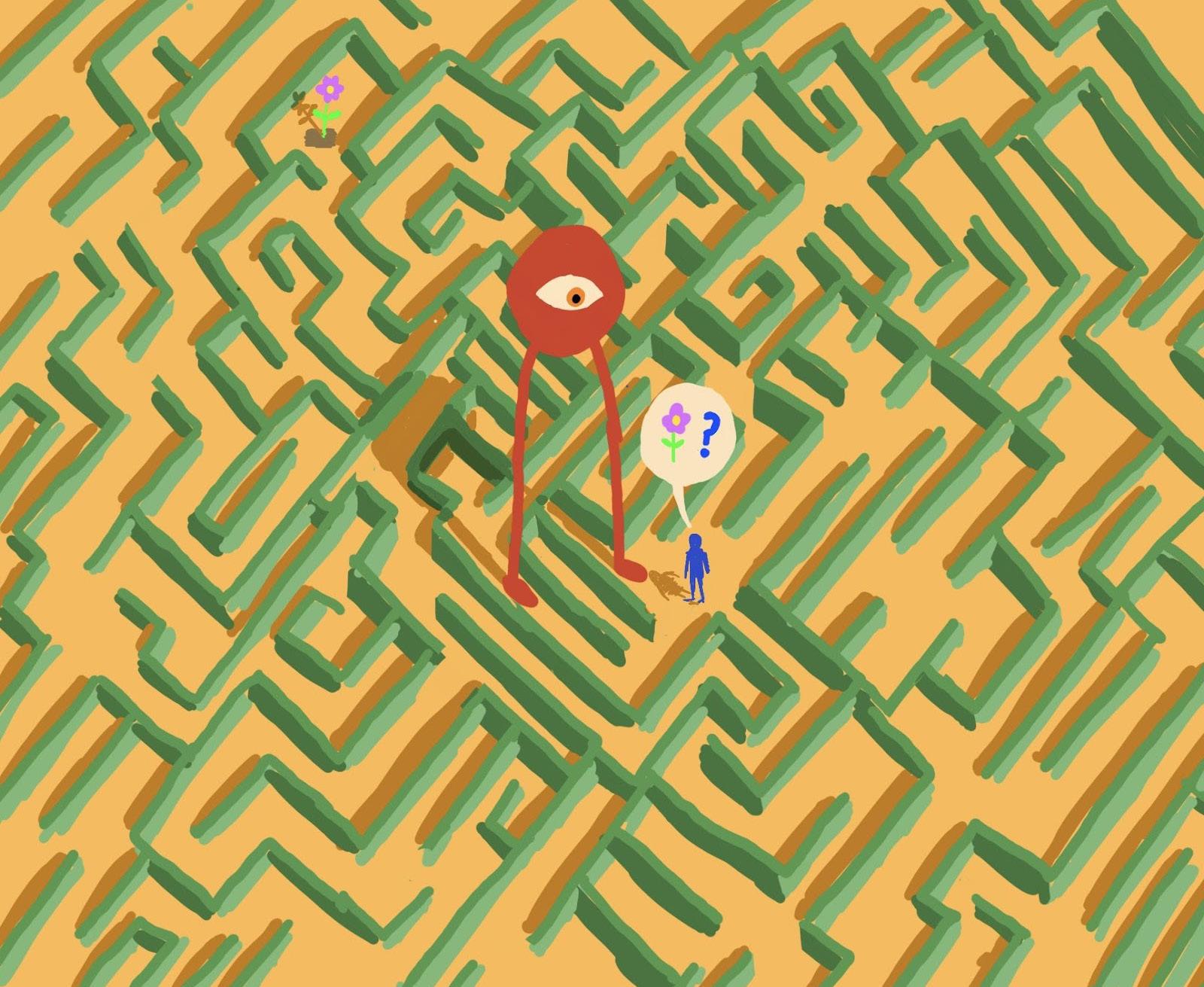
bridge. After explaining to her that the din ing hall is the big building with pillars, she told me that I was a gentleman for helping her and that my mom should be proud (I bet you feel really cool right now, Mom). I don’t know if she found that big building with pillars, but I at least got her halfway there.
Portrait 2: I finished practicing the organ in the Chapel one afternoon when an old er woman came up to me and asked about the second organ on campus in the Recital Hall. Explanatory words of direction were insufficient once again. I had nothing going on that afternoon, so I offered to take her to the Recital Hall organ, an offer she accept ed. As we walked over, she told me she was on campus specifically to see the Chapel organ, that she was a retired Hebrew and Yiddish teacher and that she was taking a seniors class about local organs. We crossed the Bridge and slipped into an open door at the back of the Recital Hall. She took some pictures of the organ and then proceeded to yell something to test the acoustics. She then told me quite plainly, “I am very old, but I am a child inside.”
We walked back to Main under the bridge. On the way back, whenever I asked her a question and she had to think about it, she would just stop in place, which con cerned me because we were practically in the road at times. When we finally made it back to Main, we stopped, and she thanked me in both Hebrew and Yiddish, and I, in turn, failed at trying to pronounce either of those back to her. Also, she was in the mid dle of a crosswalk while doing this, which again concerned me. Still, she was the cool est stranger I’ve met on campus.
I know this sounds like I'm just taking people where they want to go all the time, but I’m mostly just saying things I hope will
get people sort of there. I can’t provide good statistics on how many people I’ve actually helped by doing this. I suppose I could hand out paper surveys afterwards—like they have on Burger King receipts—and then give them a stamped envelope with my box number scrawled on it. But while Burger King can provide Whopper discounts as in centive for filling out their surveys, I don’t have any coupons to give. What I can send back are various rubber bands, which one could use for gathering small papers, such as Whopper coupons.
There's one person that I actually fol lowed to see if they made it to their des tination. This one dude in a truck asked me where the Maintenance Building was. I knew this building well because it was
right next to the Grounds Greenhouse, and so I told him to go past the Bridge and by the lake. I had to drive my club car back to the Greenhouse anyway, so naturally I followed him and watched as he crossed the bridge and drove up to the gym instead. I did not help him any further. In confirmed stats, I have given people helpful directions zero percent of the time.
I’ve helped many of the lost this year, but I’ve been in their shoes, too. I often remem ber this one time my family was going to Pittsburgh for a baseball game and we were lost (pre-Google Maps). We stopped a dude with a bike on a street and asked him where to go, and he was helpful. We were able to watch baseball that day. I think about you a lot, Pittsburgh bike man, and I thank you.
Poetry Corner
Anna KozloskiDEVOUT DUPLICITY
There once was a dubious parson Who zealously dabbled in arson, And in Hell, he rejoiced That the torture of choice Did not daunt but secretly charmed him.
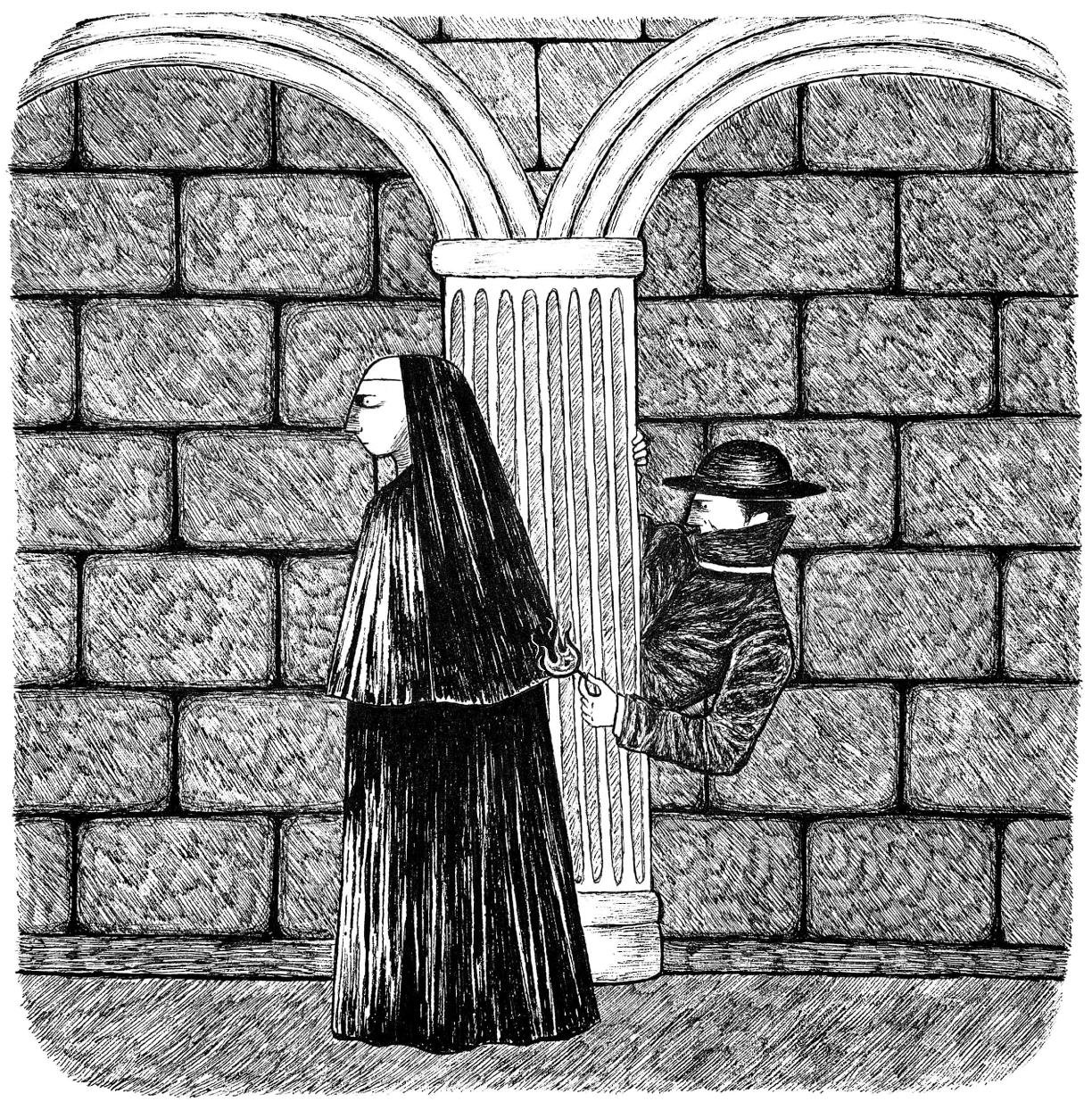
As COVID cases wane, student body hit with barrage of new, secret illnesses, like “Bass Boosted Cold” and “Just The Flu.”
strangers get more lost than they were when they startedNicholas Tillinghast/The Miscellany News.
ARIES
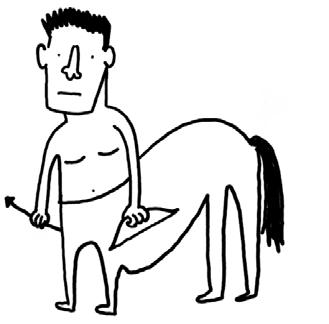

March 21 | April 19

TAURUS April 20 | May 20
GEMINI May 21 | June 20
CANCER June 21 | July 22
HUMOR
HOROSCOPES
Madi Donat Astral Projector
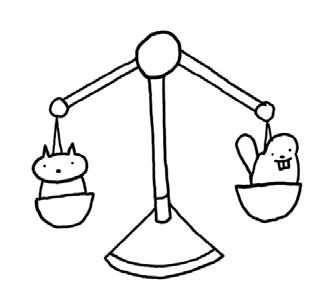
Sad, slow, sluggish… I’m running out of alliterations, but you get it. Work on up ping your energy this week with a nice, cool Celsius beverage. I’ve never had one, but ev eryone on TikTok is raving about how cool they are. Or maybe try Panera’s dangerous ly-caffeinated lemonade. Don’t sue me if you start uncontrollably shaking, though.
LIBRA September 23 | October 22
I wish I had more time to do fun things, like travel or go on long walks and watch birds. But I have so much damn HOMEWORK! I think there should be an age where it’s ille gal to assign homework, and that age should have passed us by. Not saying you should not do your stuff, but I am saying you need to take time for yourself. So.
Daylight Savings is a cruel, cruel beast that wants your blood. It literally happens to us every year, yet still we are perplexed. We cry, we plead, we cherish our extra hour until it’s pitch-black by 4:30. We all know we’re not getting a White Christmas, we’re getting a pitch black one. Because it will be dark. By like noon.
Today sure has been a week of ~things~, hasn’t it? Like, the things that don’t stop even when you’re done with them. That’s all fun and cool. How can we remedy this? You can say “yes” to fewer things, maybe, but that’s no fun. What about learning how to stop time so you can do more stuff? That seems more realistic.
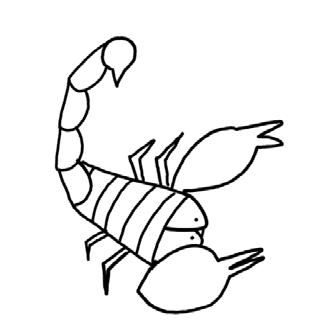
SCORPIO October 23 | November 21
What does it all MEAN? Life is so con fusing sometimes. I literally don’t get it. One day everything’s great and the next you have to wake up early because you told someone you’d meet them at a godawful hour. It’s not FAIR! But we sol dier on. Admire a bug today, and notice the beauty even in its inherent ugliness. It’s a metaphor, I guess.

SAGITTARIUS November 22 | December 21
With all these holidays coming up, it can be tempting to covet material goods. Which is nice and all, but some things are better, like experiences! This holiday season (including your birthday), try and find people you want to do cool things with, like going hiking or ly ing down on the ground and sobbing.
LEO July 23 | August 22
The semester is going by way too fast, but never fear! Soon it will be Thanks giving, and then it will be finals! Okay, actually that is much scarier than I meant for it to be. Practice meditation and then maybe you’ll feel better. I like sitting alone on my bed doom-scrolling until I cry. It’s not traditional mindfulness, but I like to be a trailblazer.




CAPRICORN December 22 | January 19
Investigation is one of my favorite parts of life! Isn’t learning so much fun? For real though, learn something new this week. I’ve been really into crosswords, but only the Monday ones because the rest make me feel dumb. Also Zebra logic puzzles. Those make me feel dumb too, though, actually. Make your own choices.
Silliness is in the air this week. Per haps even whimsy. Ask your friends weird questions (but not the kind that make them uncomfortable). Make them choose between silly options, like turn ing into an antelope or (insert another option; I just got my COVID booster so my brain feels like Jell-O. I believe in your abilities).
AQUARIUS
January 20 | February 18

Spirituality can be bunk, but it can also be SO FUN. The stars tell me that you’re feeling chatty this week. I know that be cause of my powers. Not really, though. Maybe you’re not being chatty at all. May be I’M being the chatty one. What then? Did the stars lie to me? Trick question! They never lie. Or do they always lie?
VIRGO
August 23 | September 22
The people I know who are super into one topic or are writing a thesis they’re super dedicated to are so cool but they also scare me so much. I’ve gone down my fair share of rabbit holes, but none of them have last ed that long. Currently I’m investigating historical fashion, but yesterday I was look ing at country music. Whatever. Do what you like.
PISCES
February 19 | March 20
Giving into temptation is a dangerous game, but it can be nice to toe the line. Ever wanted to hit something but couldn’t let yourself? Punch a pillow instead! Wanted to scream? Scream into a pillow! Wow, I never realized how useful pillows could be. Thank your pillow this week. She is every woman. It’s all in her.
HUMOR
How to have the best public transit adventure possible
Alyssa Willeford Notorious Card-SwiperMy current studies abroad in Japan have given me the opportunity to learn a wide variety of things about myself and the world around me. For instance, I’ve discov ered that I have a taste for adventure. That is to say, I yearn to have adventures, but I spend the entire adventure in question wanting to wrap myself up in the nearest carpet and magically fly home in my sleep like a beanand-cheese burrito launched from a fire hose. What’s more, I’ve learned that Vassar’s grant programs provide excellent opportunities for students who go abroad. Kicking around an unfamiliar city is a lot more fun when some body else is footing the bill!
But among the most valuable lessons I’ve learned in the Land of the Rising Sun is one that I could have also learned in New York City, only at much greater risk of being turned into subway pizza: namely, how to ace a morning commute. Reader, have you ever gotten on a bus or a train, looked around at all the gray-faced business people around you and thought, “How do they do it?” Well, after an entire two months of commuting, I now know everything there is to know about the morning schlep, and I can transmit it to you for the low, low price of $0—although this does rise to $3 during peak hours.
First of all: Get yourself a card! Don’t be one of those tourists holding everything up as they fumble for change. We live in the 21st century, and while we may not have flying
cars, every transport system everywhere on Earth now accepts payments via little magi cal tap cards. How do you use these, you may ask? You simply go into a transit station, squint at a filthy, graffiti-defaced machine op erating in a foreign language (New York MTA English counts as a foreign language for these purposes) and finally pay a nominal fee for a little card that you will lose almost imme diately. You can often charge these up with a lot of money, so make sure to put your college savings on them, especially if you are travel ing in a dangerous part of the world such as Canada. The thrill of seeing the big balance number come up on the ticket gate screen when you tap is more than worth the risk!
Secondly: Know your etiquette! The way that savvy commuters separate the sheep from the goats, so to speak, is by watching who can successfully manage the complex game of travel manners. For example, in Ja pan, the correct way to ride the subway is in dead, intimidating silence. In New York City, on the other hand, you practically have to talk loudly so that you can be heard over the man carrying a boombox playing “MTV’s Worst of the ʼ90s.” Just watch what others around you are doing and follow their lead—but don’t watch too closely, or else you might end up learning the hard way that the local culture punishes those who stare by slapping them repeatedly with dead fish. This practice also explains the smell common to many public transport systems.
Thirdly: Get up close and personal! One
thing all commutes have in common is the central paradox of morning travel: namely, no one wants to be there, and yet everyone is. Often, as a joke, transit companies will place “maximum occupancy” stickers in strategic, highly-visible locations around their vehi cles. This is so the passengers, most of whom are currently becoming intimately acquaint ed with a stranger’s inexplicably-pungent body odor, can laugh merrily at the irony of it all.
As a bonus, sometimes the train or bus will become so crowded that those in the center of the space can’t reach any handholds, sending them tumbling comically around after every stop like toddlers in a Zorb. You can rest as sured that the transit planners are watching
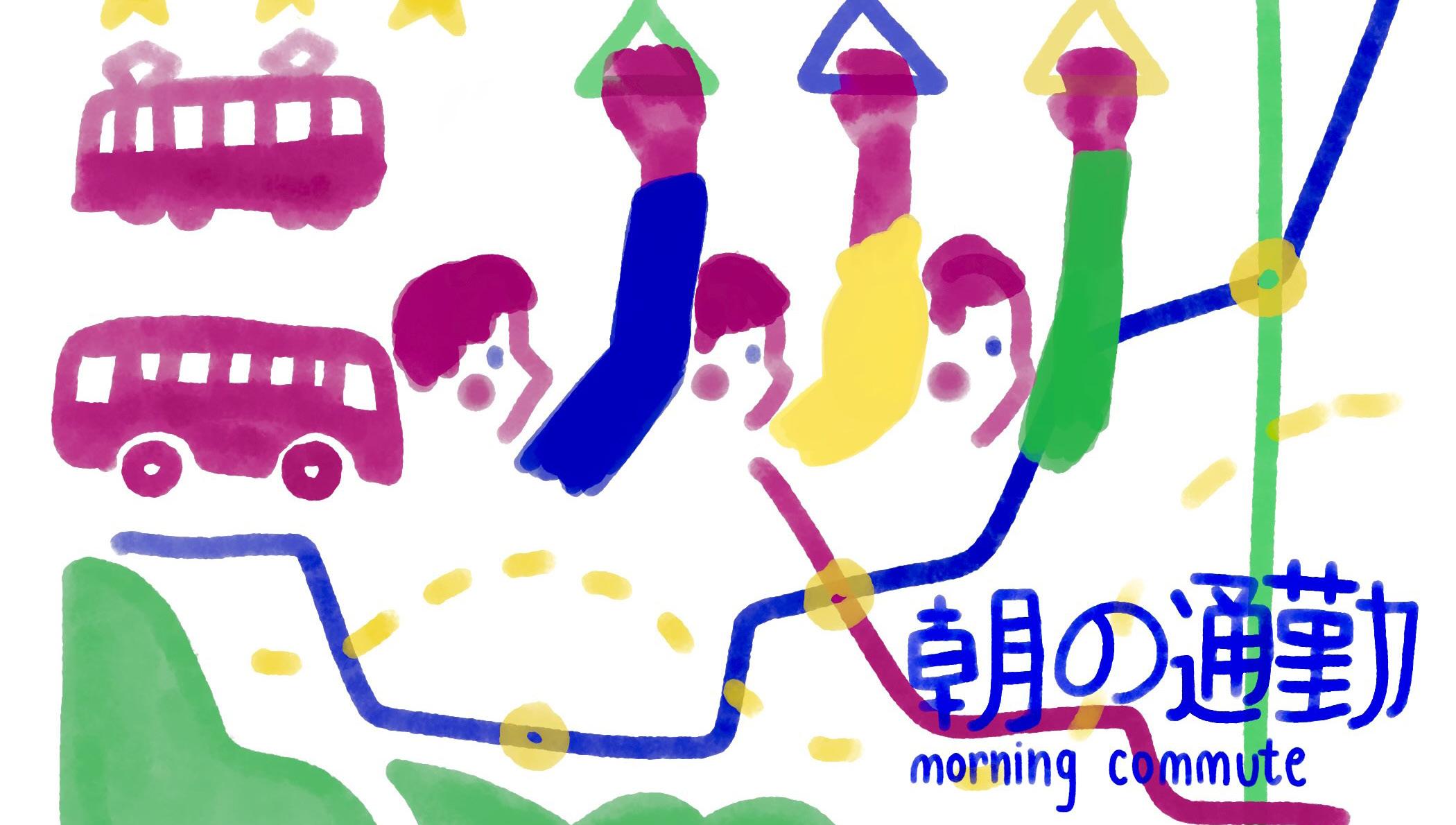
all this through hidden cameras and laugh ing; after all, as low-paid public servants, they have to find some way to extract value from their work.
So there you have it! That’s commuting for you in a nutshell—although often your sub way car will feel much, much smaller than a nutshell.
If you follow these tips, I personally guar antee that nothing will ever go wrong with any public transit trip you take for your entire life.
Note that I can’t be held legally responsible for that statement—lawyers would have trou ble reaching me to serve me with papers, con sidering that I am now firmly sandwiched be tween four large, sweaty businesspeople.
Not loving overalls? I'm totally over all of it!
Overalls are underrated, and I’m over it.
On style, function and number of pock ets alone, everyone should have at least one pair of overalls in their closet––and yet, to my dismay, I’ve found that overalls are not as much of a staple in everyone else's lives as they are in mine. For those needing the nudge, or aggressive push, towards the won derfully amazing world of overall-living, look no further. Here are five, completely relatable and objective reasons to run and purchase, or borrow and never give back or sew your own pair of overalls today.
1. There is not a single place on this plan et where you couldn’t wear overalls. If that’s not a sign of true style, I don’t know what is. I’ve taken final exams in overalls, I’ve fallen asleep in overalls and I’ve even worn them to holiday parties. I know what you’re thinking: “Sure, overalls are great for casual Friday, but what about all of the elite social gatherings I attend?” My answer is simple: Wear overalls. You can easily sneak home at least four trays of mini chicken pot pies and cream puffs into the pockets this article of clothing provides. More on that later.
2. When I put on a pair of overalls, I feel like a farmer. All you need are some chick ens and a butter churner, both of which can be found on Craigslist and shipped to your dorm within 48 hours. Overalls simply evoke feelings of simpler times, where my responsibilities included rolling around in the dirt, playing with leaves and being home by sundown. Who wouldn’t want to relive that part of their childhood or, better yet, make it their future?
3. Overalls are cozy but cool at the same time. See, my legs are warm, but my arms are free and unrestricted to do those fun pin wheel arm exercises my middle school gym teacher was obsessed with but then stopped doing because everyone used it as an excuse to slap their friends. I really like those ex
ercises. But, if that’s not your jam, having your arms out can open the door for a whole bunch of other activities, such as giving yourself temporary tattoos on your bicep or taking part in an unrestricted arm wrestling competition. There’s just something secure about being strapped into a piece of clothing. You can go on a trampoline, sit at a desk or even do yoga in overalls, and you never have to worry about them falling off or riding up or ripping down the seam like that pair of jeans you’ve had since seventh grade from American Eagle.
4. Overalls are resilient—much like the cockroach that always seems to get to the shower before you do and then refuses to va cate until 3 a.m., when you already walked down three flights of stairs to use a different shower. This article of clothing is built to handle the wear and tear of time, and cer tainly the wear and tear of college life. Walk ing to the THs? Overalls will keep you cozy when it starts to pour and you immediately regret your decision to leave your cozy bed for an overrated knock-off frat party in the middle of February. Play a sport? Overalls will give you some extra protection when you’re getting tackled on the rugby field. [Disclaimer: Overalls are not in accordance with rugby rules, so I don’t recommend ac tually wearing them to a school-sanctioned athletics game, but if you do, don't sue me when you tear a ligament because I am not a doctor, and I am a college student with debt, so it wouldn’t be very cash money for either of us.] My own pair of overalls has survived both Founder’s Day and finals week, and I can’t say the same for most of my peers— clearly, overalls have something we don’t. If you STILL need to be convinced that overalls are superior to every other article of clothing in your closet, I have saved the best reason for last.
5. Overalls have pockets. So many pock ets. Mine have five that I know of, but I bet there are some hidden ones somewhere if I looked hard enough because as I’ve been
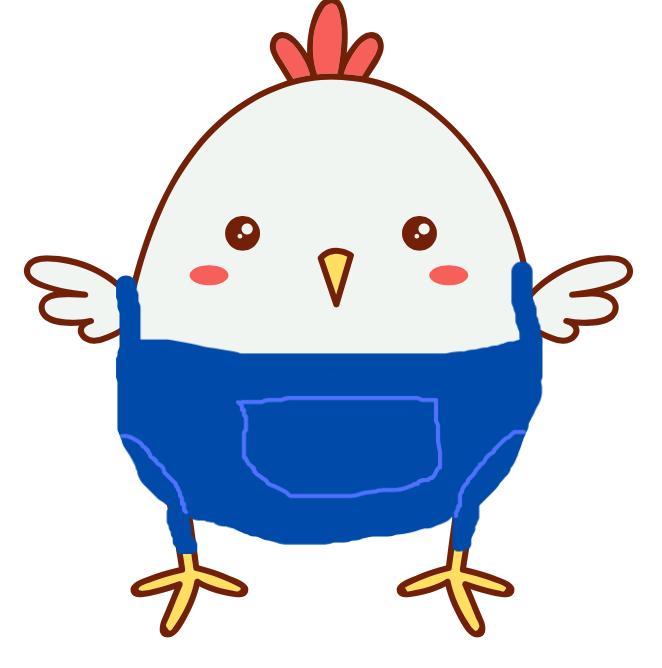
writing this list, I’ve realized that overalls are the gift that keeps on giving, and I just know they’ve got more to give. My favorite pocket is the big pouch in the front because it gives kangaroo energy. See, the joy of this pouch is that you aren’t limited to stuffing it with a baby kangaroo, although I’d highly recom mend that if you can get your hands on one. I’ve used it to store my driver’s license, a pack of Chips Ahoy! and the answers to a chem istry test. Just kidding, I don’t take chemis try because I have no interest in crying over a titration test—but if I did take chemistry, I bet I could even fit a beaker in there if I tried. Maybe even three if I stacked them inside one another like Russian nesting dolls, and
at that point, I may as well try to fit a micro scope in there. I’m getting ahead of myself and maybe chemistry isn’t actually so bad, but my point is that pockets are not a given in clothes, and overalls make up for that and then some. With overalls, just know that you’ll never need to hold your phone awk wardly in your hand all night again (there’s a pocket for that!) or find a place while danc ing to put your drink (there’s a pocket for that!) or try to steal the cats from Central Receiving without a secure way of bringing them back to your dorm (there are two pock ets for that!)
Overalls are in; they always have been and always will be. So what are you waiting for?
OPINIONS
Is Poughkeepsie experiencing gentrification?
Brian J. Godfrey Professor of Geography & Urban StudiesPoughkeepsie has long suffered from image problems, ranging from laugh able to serious issues. Besides its curious name—oddly pronounced “Po–KIP–see” —the small mid-Hudson city’s reputation suffered from its loss of an active river port, deindustrialization and decline of the cen tral business district, as did other towns eviscerated by suburban sprawl. Extensive expressways and other urban renewal proj ects, which wreaked havoc between 1960 and 1975, may have worsened the situation. The city became a famous punch line, as when Gene Hackman ranted about “Pickin’ your feet in Poughkeepsie” in “The French Connection.”
Yet, in recent years, the city has expe rienced notable upbeat trends. Entrepre neurial immigrants from Latin America, the Caribbean, Asia and elsewhere have revived local commerce and occupied many vacant homes. In the 2009 book “From Main Street to Mainframe,” Harvey Flad and Clyde Griffen suggested, “Hud son Valley cities have seen their prospects surge and ebb, then begin to revive again, as they head into the twenty-first century.” Since moving here in 1985, I never thought that the railroad bridge, damaged by a fire in 1974, would spring back to life! Giv en such evidence of revitalization along Main Street, the Waterfront and historic districts, many residents and visitors now ask whether Poughkeepsie is experiencing “gentrification.”
The answer depends on how we define the term. Coined in 1964 by British urban
planner Ruth Glass, gentrification initially referred to upgrading working-class neigh borhoods by affluent residents (“gentry”) in South London. While retaining this core meaning, gentrification now often applies to revitalizing commercial districts and residential areas. In many U.S. “superstar” global cities—New York City, San Francis co, Boston, Seattle and others—racial, eth nic and cultural divides have worsened dra matically. To gauge whether Poughkeepsie is gentrifying, I suggest that we consider three main issues.
First, have governments and public-pri vate partnerships significantly reinvested in the city? Yes, Poughkeepsie has several areas of transformation, backed by public funding, local philanthropy (notably the Dyson Foundation), community non-prof its and neighborhood activists. Projects have redeveloped long dilapidated districts, including the waterfront, commercial or industrial sectors, and bridges or railroad corridors. The historic railroad bridge re opened as the “Walkway Over the Hudson” in 2011, the result of a collaboration be tween a non-profit “friends” organization and the State of New York. Hudson River Housing has provided affordable housing and business support in the Middle Main project and elsewhere. The goals of this NGO and the city government explicitly oppose social displacement and favor lo cal upgrading by residents. There remain blighted areas in the city, but things gener ally have changed for the better.
Second, this improving context raises another critical issue: Is there evidence of real-estate appreciation that has displaced low-income residents? According to Pough
keepsie’s recent “Housing Needs Assess ment,” prepared by the Hudson Valley Pat tern for Progress, the city now suffers from a housing crisis, which includes rising pric es, aging housing and social displacement. Of course, housing shortages and excessive prices characterize much of America at this point. In Poughkeepsie, vacant housing has fallen from approximately 600 units in 2016 to 200 in 2021. Over half of all households in the city spend more than 30 percent of their total income on housing costs, which indicates they are “cost-burdened.” Among these households, 630 homeowners and 2,935 renters spend more than half their in come on housing, which suggests that they are “severely cost-burdened.” A third of the city’s renters have to spend most of their in come on housing. On the other hand, the city recently added 502 new housing units and another 1,443 are now in the pipeline for development; about a third of the total 1,945 are considered “affordable” housing units. These new units may alleviate local housing shortages.
Finally, a third consideration depends on the revival of the local economy, mainly by replacing lost industries with new business es and start-up firms. While Poughkeep sie has seen long-term growth in the arts, medicine, technology, higher education and tourism—which have partially made up for the ongoing employment decline at the nearby IBM plant—the recent COVID-19 pandemic certainly curtailed this trend. As a result, wages in Poughkeepsie have stag nated in recent years, while housing pric es and rents continue to climb. Indeed, a video released in 2018, “Think Dutchess, Poughkeepsie Go!” wishfully depicted the
growth of a new “creative class” of young entrepreneurs to revive the city’s water fronts, historic districts and commercial life. Despite significant economic diversi fication in recent decades, economic (re) development remains an important project for the city and town’s future.
On the other hand, even with the city's growing demand and cost of housing, the commercial and residential vacancy rates have generally fallen without provoking massive displacement. The local econo my has restructured with new sectors, although it certainly needs better-paying jobs. Providing more affordable housing and growing the economy remain essen tial, but the city neighborhoods have stayed relatively stable. The area of greatest need is the North Side, near the Walkway, which historically suffered from redlining, racial discrimination and a lack of urban services and recreational facilities. The city has en deavored to provide more community po licing and youth services to provide alter natives to at-risk youth.
Overall, gentrification has not reached prohibitive proportions in Poughkeepsie, as attested by remaining commercial and resi dential vacancies. Clearly, our city does not suffer from the hyper-gentrification of Bea con or the continuing struggles with eco nomic revitalization evident in Newburgh. Despite Poughkeepsie’s problems, the city seems to have reached a sweet spot where upgrading proceeds without widespread social displacement. I urge Vassar students to get involved locally through communi ty-engaged learning (CEL), volunteer work and research projects to benefit the “Queen City” of the Hudson Valley.
Vassar should rethink post-pandemic crowding
Jacques Abou-Rizk, Maryam Bacchus News Editor, Design EditorFollowing the COVID-19 pandemic, the “return to normalcy” has brought about a resurgence of large gatherings worldwide. Masses have come together in celebration of holidays as well as concerts and other community-based events. As we transition out of the distanced society we’ve known all too well these last few years, questions of the feasibility and logistics of large events have arisen. In an article from The Wall Street Journal, the author posits that due to strict isolation measures, previous party goers and businesses were eager to get back to their previous conventions. However, recent events in South Korea escalated un controllably when a Halloweekend crowd turned deadly as a crowd crush consumed celebrants.
According to the same article, “The trage dy likely resulted from poor crowd control, experts said, raising questions over how South Korean authorities had regulated the mass numbers who flocked to the district to celebrate the first Halloween following the relaxation of most of the country’s Covid-19 restrictions."
For Vassar, a push to transition away from the dreadful COVID-19 restrictions on social life has been growing for the last two years. The Noyes tent returned for Halloweekend last year, and it has attracted large groups of students.
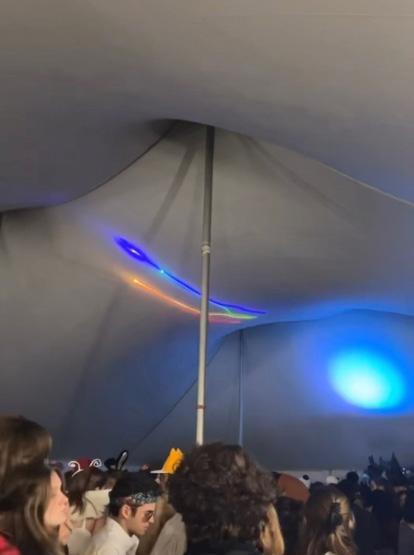
The administration has expressed con cern over crowd safety at recent events, in cluding the Noyes tent on Halloweekend. Associate Director of Campus Activities
William Rush said in a written correspon dence, “The goal at large events is always to prevent unsafe situations from happening in the first place. For example, at the Hal loween event on Noyes Circle, staff at the event worked constantly with the student DJs to stop the music and make announce ments asking students to spread out when it seemed the crowd was getting overwhelm ing for some people.”
Additionally, he said, “For the Halloweek end Tent event, the max capacity for the tent was 600 people. This was managed jointly between Campus Safety, Crowd Control attendants, and Campus Activities staff. When the tent was reaching capacity, addi tional students were not let in until the tent emptied a bit.”
Vassar is but a part of a pattern of harm ful and dangerous crowds post-pandemic around the world. According to The Wall Street Journal, “Covid-19 restrictions had cre ated pent-up demand from partygoers and businesses alike.” Just over a year ago, Travis Scott’s “Astroworld” concert tragedy killed 10 in Houston because of similar crowd issues. The article continued that serious problems can arise within minutes. At Vassar College Entertainment’s (ViCE) Spring Concert, In digo De Souza voiced concerns over rude and aggressive crowd behavior.
An abundance of students have felt unsafe at such events since the College began loos ening restrictions on gatherings for over a year now. According to Mariano De Carval ho ’25, “Crowd safety seemed to be non-exis tent this year. I personally was covered with [bruises] following the Halloweekend Tent and saw several friends get knocked over by rough crowds.”
With these policies, in addition to the presence of individuals in black and yellow jackets scattered throughout campus during events with large turnouts, it’s only natural to question what training and actions are capable of preventing such tragedies. Ac cording to a written correspondence with James Kelly, the Director of Environmental, Health and Safety, “Event staff know to di rect an evacuation if necessary, and call in for assistance from police, fire, and outside medical in the event of an emergency. If nec essary, a United Command (our communi ty emergency responders) would be set up to manage the emergency in a coordinated fashion.” But what exactly does that entail, besides turning off the music, politely ask ing students to step back and limiting the tent to a mere 600?
In addition to administration policy, the responsibility falls partially on students partying. “Being aware of one's space is in credibly important at large events,” Rush pointed out. “Moshing can be incredibly dangerous and make many people uncom fortable, pushing them into barricades and other people.”
Despite the measures suggested by the College, students in the tent were forced to take responsibilities of helping others instead of enjoying a comfortable party en vironment. De Carvalho said, “There were multiple instances where I had to help peo ple I didn’t even know get out of the crowd because they were falling and no security was coming to help them up. The entire crowd at the tent event this year seemed much more aggressive than last year and it was not an experience that felt safe.”
Given the risks exemplified by all of the
above mentioned situations, it is clear that crowd control needs to be taken into consid eration at a higher degree than it has been. The pandemic has changed many aspects of modern society and crowd preparedness should develop in concurrence. On a global scale, event leaders should be aware of the potential of a crowd surge and have both pre ventative and emergency measures in place. Additionally, while Vassar’s administration has thought about on-campus preventative measures, more should be done to protect our community and ensure that everyone can have an enjoyable time, particularly at events hosted by the College. In either situa tion, individuals attending events expecting to draw large crowds should have emergen cy knowledge and resources available to them should they need it.
Vassar Brewers Sports Roundup:
Nov. 10, 2022
Men’s Cross Country Women’s Rugby
ECAC Championships
Nov. 5
This past weekend, the Vassar men’s cross country team went across the river to the Hudson Valley Sportsdome for the Eastern College Athletic Conference (ECAC) Championships. The Brewers dominated the meet, not only finishing in first place out of 13 teams, but beating second place by almost 50 points. Vassar had all seven runners place in the top 20, including five who earned All-ECAC honors. Levi Lilienthal ’25 was Vassar’s top finisher, running a time of 29:10, good for fifth overall. Not far behind was Arlo Rucker ’26 in seventh place, finishing with a time of 29:18. Kai Chang ’25 came across the line with a time of 29:38 and finished 11th overall. To round out the All-ECAC runners, Nick Redstone ’25 and Doug Cobb ’23 [Disclaimer: Doug Cobb is Sports Editor for The Miscellany News] finished back to back in 14th and 15th place with times of 29:44.1 and 29:44.9, respectively. Lukas Muzila ’23 and Jackson Bernreuter ’25 also finished back to back with times of 30:02 and 30:07 to place 17th and 18th overall, completing Vassar’s top seven. Up next for the Brewers is the NCAA Mideast Regional Championship in Canton, NY, on Saturday, Nov. 12.
Tri-State Rugby Championships
Nov. 5-6
Afterdominating Marist College 76-19 on Oct. 30 to advance to the semifinals of the TriState Rugby Championships, the Vassar Brewers picked up right where they left off with their 48-0 victory over the Rensselaer Polytechnic Institute (RPI) this past Saturday. The Brew ers spread around the scoring, with tries from Caeli Porette ’23, Julia Wolff ’26, Sophia Bailey ’26, Isabel Rodriguez ’25, Katie Canavan ’24 and Yasmeen Kassem-Scott ’26, including two apiece from Porette and Bailey. Additionally, Zoe Lynch ’25 had four cons. The commanding shutout victory put Vassar in the finals, up against the only team that has beaten them thus far this season: Fairfield University. The Brewers came out of the gate strong, going up 21-5 at the half. They never looked back, increasing their lead to 28-5 in the second half before a garbage time score from Fairfield made the final score 28-10 in favor of Vassar. The Brewers got tries from Bailey (2), Kassem-Scott and Lauren Showalter ’24. Lynch again had four cons. The TriState Conference Championship victory punched Vassar’s ticket to the CRAA Championships in early December in Matthews, NC.
Field Hockey Men's Soccer
Liberty League Championships
Liberty League Championships
Nov. 1-4 Nov. 4
The Vassar field hockey team made it to the semifinals of the Liberty League champi onship tournament before getting knocked out by the University of Rochester by a score of 0-2. Last Tuesday, Nov. 1, the Brewers cruised past Skidmore College 2-0 at home in the first round of the tournament. In the first quarter, Jaclyn Narleski ’24 scored to put the Brewers on the board, and then in the next quarter, Hailey Brigger ’24 made it 2-0 with a goal of her own. The Brewers continued to play dominant defense in the second half and got the shutout to advance to the semifinals. On Friday, Nov. 4, the Brewers traveled to Rochester, NY, to play the top seeded University of Rochester. The first quarter was scoreless, while the second quarter saw two shots from Vassar saved by the goalie before Rochester was able to open up the scoring and take a 1-0 lead. The second half was more of the same, as Vassar had a number of shots but the team just wasn’t able to get any into the net as Rochester doubled their lead and took home the victory 2-0 to advance to the final. The loss moved Vassar to 13-6 on the year and ended the season.
The Vassar men’s soccer team suffered a heartbreaking loss to Skidmore College in a shootout in the semifinals of the Liberty League championship tournament. Both teams played lockdown defense for all of regulation and the two 10-minute overtime periods. Vas sar outshot Skidmore 16-14 but just couldn’t quite get anything in the net. After the two over time periods it came down to a shootout. Duncan Keker ’25 scored Vassar’s first shot to put the Brewers up 1-0 as Skidmore missed the first shot. Vassar missed the second shot and Skidmore made theirs, so it was tied 1-1 going into the third shot. Vassar again missed and Skidmore took advantage by scoring to go up 2-1. But the Brewers weren’t quite finished yet, with Charlie Rod house ’25 sending Vassar’s fourth shot into the net to tie it up at 2-2 and a miss from Skidmore ensured that the game headed to the fifth and final shot. Unfortunately, Vassar’s run ended there when Skidmore scored on the fifth attempt and the Brewers couldn’t find the net, sealing their fate 2-3 in the shootout. Eric Wnorowski ’23 had four saves for the Brewers in goal. De spite the loss, Vassar received an at-large bid for the NCAA Tournament at Bowdoin College, where the Brewers will face Babson College in the first round on Saturday, Nov. 12.
Men’s soccer earns at-large bid to NCAA Tournament
against Babson College.
The game will take place on the campus of Bowdoin College on Saturday, Nov. 12.
For the fifth time in program history, and for the first time since 2016, Vassar men’s soccer is going dancing.

After a brutal defeat in the Liberty League tournament semifinals to Skidmore by way of penalty kicks, the Brewers' season hung in the balance heading into Monday’s selection show.
Vassar had earned the second overall seed in the Liberty League tournament, but the loss to Skidmore meant it had not complete ly knocked the third-seeded Thoroughbreds out of contention for a spot in the national tournament.
The Brewers might have had the stronger regular season performance, but the selec tion committee still had to consider Skid more’s postseason success to decide which team to choose for the field of 64.
Vassar and Skidmore were not necessarily directly pitted against each other for a specific spot in the tournament, but when two con ference rivals have such similar résumés, it is rare to see both selected if they are not ranked sufficiently high enough in the regional rankings.
The Brewers’ hopes were aided by St. Law rence, the Liberty League’s regular season king, solidifying the top spot and defeating Skidmore in the Liberty League Champion ship. The league playoff title earned St. Law rence an automatic bid to NCAA’s, nullifying the threat to the Brewers’ tournament hopes.
Had St. Lawrence lost to Skidmore, Skidmore would have automatically advanced into the tournament, and St. Lawrence would have almost certainly taken the at-large bid, all but ending the Brewers’ tournament hopes.
With St. Lawrence out of the way, the Brewers’ regular season résumé proved suf ficient to earn them a first round matchup
Babson is ranked 13th in the country and enters the tournament as NEWMAC cham pions for the third straight season. The team also finished conference postseason play atop the Region II rankings.
Babson is a storied program, led by 37thyear Head Coach John Anderson who has now led 19 Babson teams to the NCAA tour nament.
Vassar finished conference postseason
play third in the Region III rankings and is led on the offensive side and midfield by Owen Fauth ’23, Ryan Lane ’23 and Duncan Keker ’25, who were all named to the AllLeague First Team on Tuesday. Defensively, the Brewers had goalkeeper Eric Wnorowski ’23 and defensemen Nolan Alexander ’23 and Danny Berry ’25 named to the All-League Second Team.
Saturday’s matchup will mark the first time Vassar and Babson face off in men’s soccer, meaning there is no recent history to hint at what to expect on Saturday. Com
parisons through common matchups are also difficult. Vassar did not play any NEW MAC teams this season, and Babson did not face any Liberty League opponents. Even in out-of-conference play, the teams do not share any common opponents.
For the Brewers, the opportunity to com pete in the NCAA tournament is another milestone in a highly successful 2022 season under the guidance of new Head Coach Jona than Hood. If the team wins, they’ll advance to play the winner of Bowdoin College and the Merchant Marine Academy the next day.
This crossword will send you on an adventure for clues in bold, go out and walk around campus to find the answers. There are only four of these interactive clues, but don't let that stop you from wandering around for as long as you want. Take a break from your busy day to enjoy our little Vassar bubble!
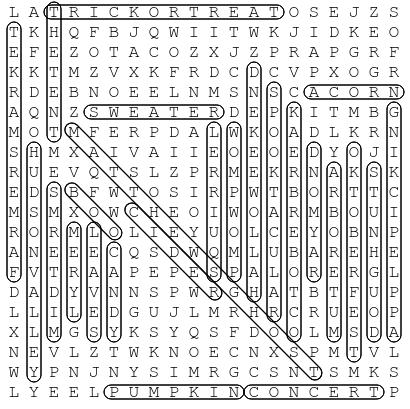
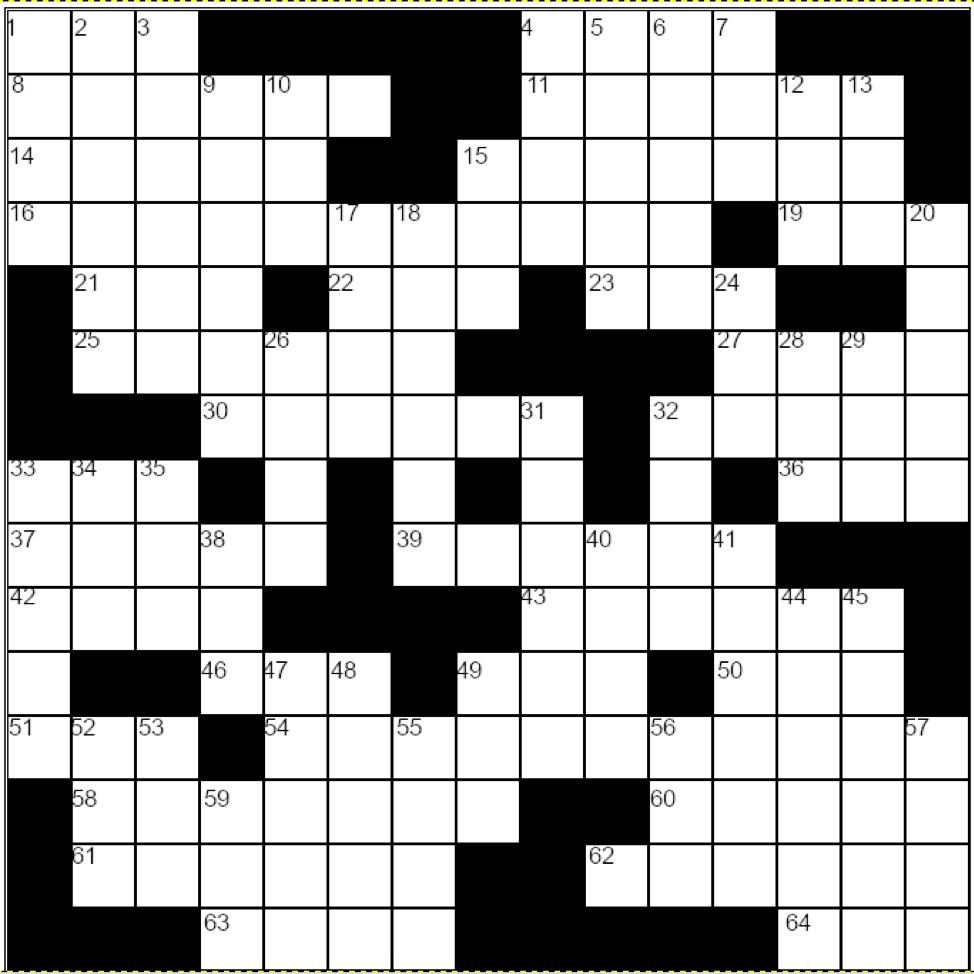
Constitutional change almost ratified in the '70s (abbr.)
Stroll over to Sunset Lake. Look for turtles and see if you can spot the heron who lives near the patch of tall grass on the far side (there may or may not be some drama going on between her and the geese…). Once you get to the other side, find the last bench, closest to the waterfall. It's dedicated to this woman, Vassar class of '31. Now walk up Sunset hill and look at the view!
A brown striped cat
A baseball stat
Second person possessive adjective for a pirate
In football, often accompanied by silly dances (abbr.)
Armitage of Young Sheldon
Some of Shakespeare's plays originally ap peared in this format
Default Google Doc fonts
"Red" anti-Communist periods

Not obtuse
Against (Germ.)
Suffix for meteor or Trotsky
They want your taxes
Dog, cat, etc.
Egg holder
@!! 57. Another clue for the Priscilla Bullitt Col lins Trail! There are this many weeping wil lows on the trail. While you count them enjoy listening to the water! 59. Cookware brand T-__
